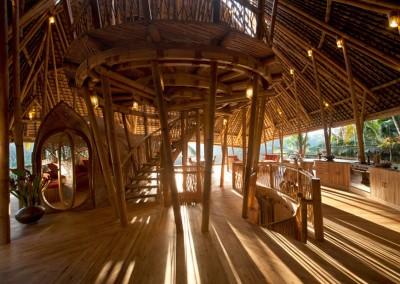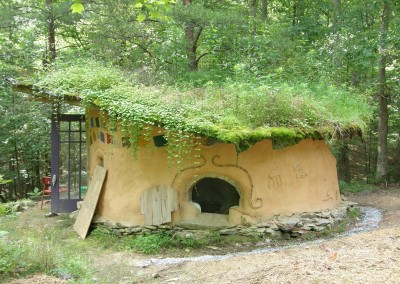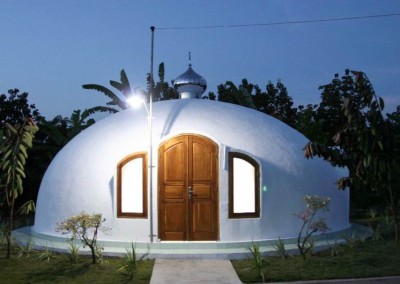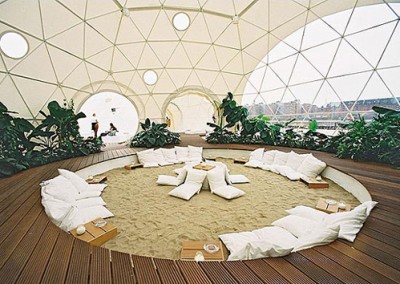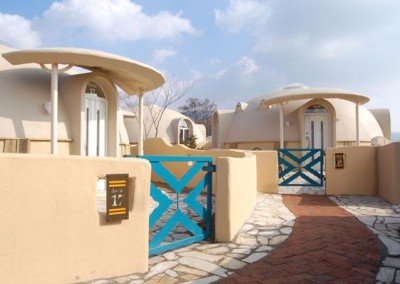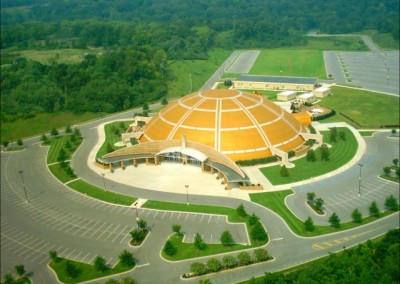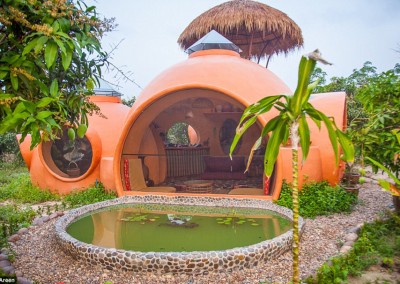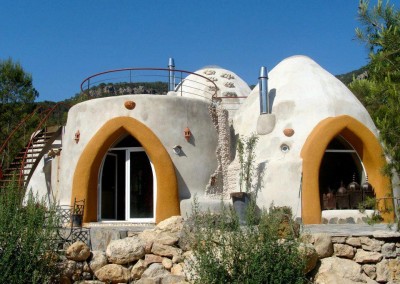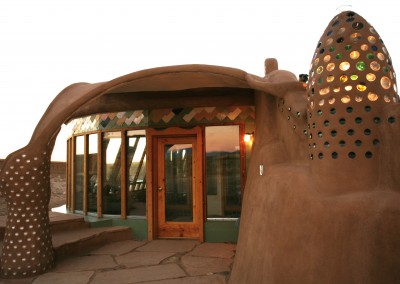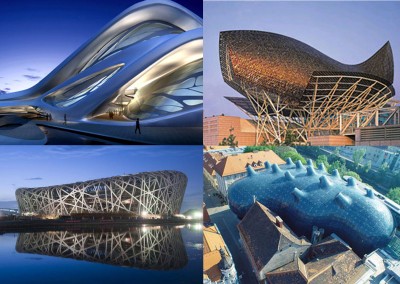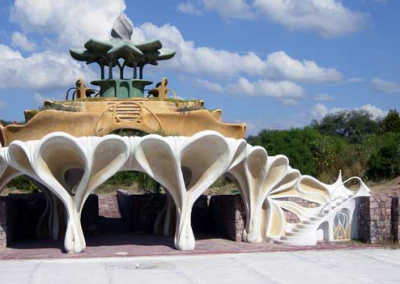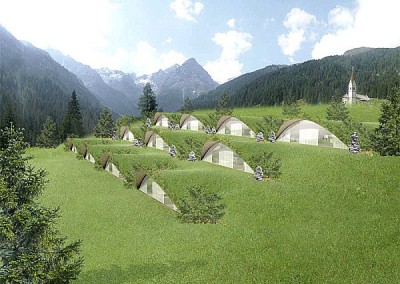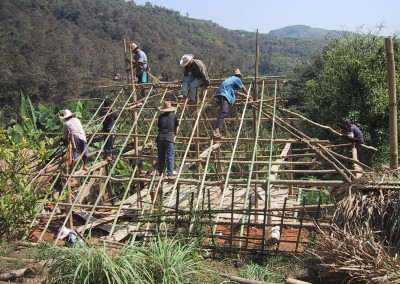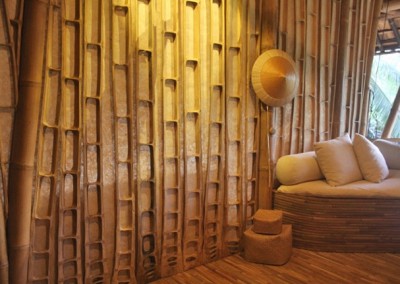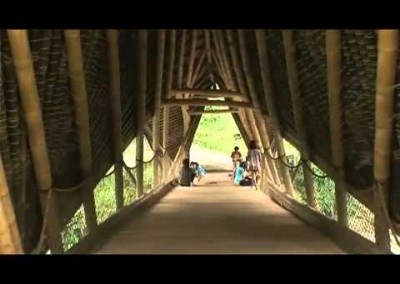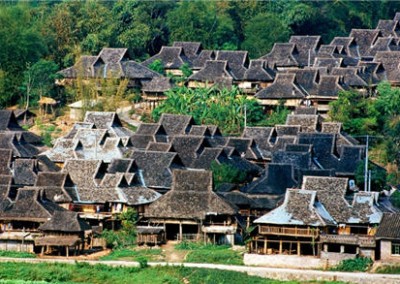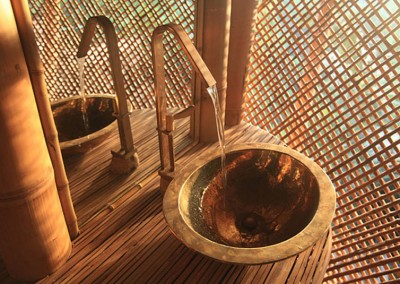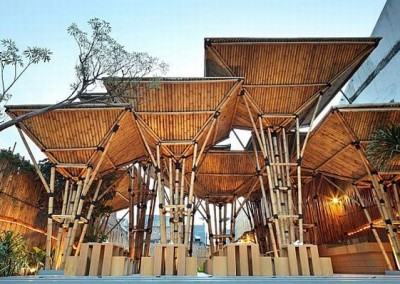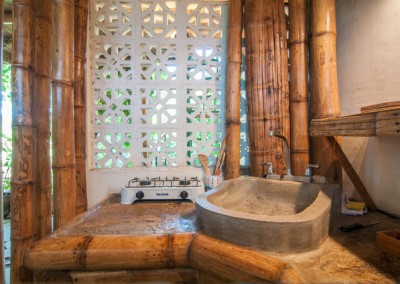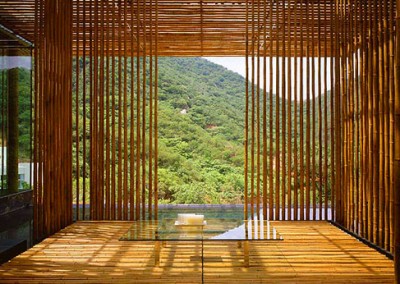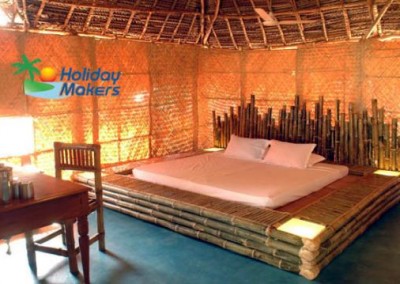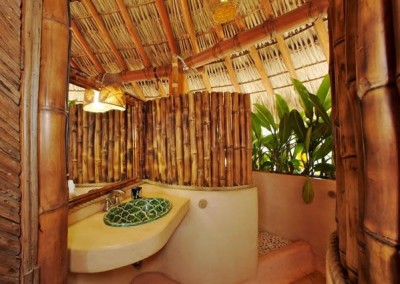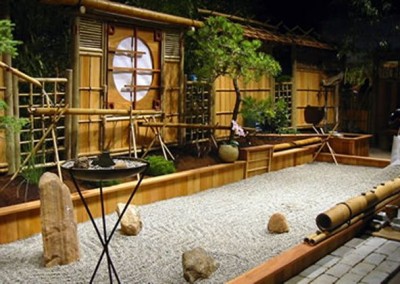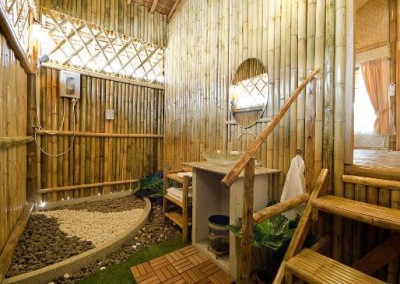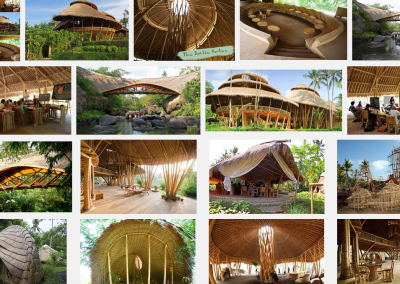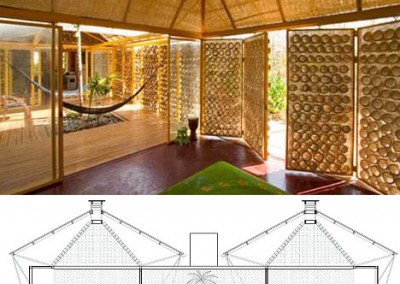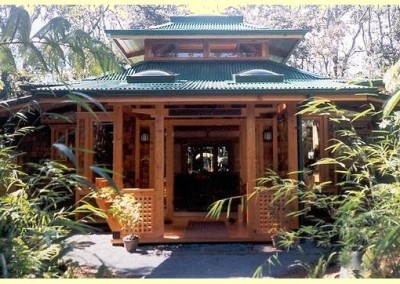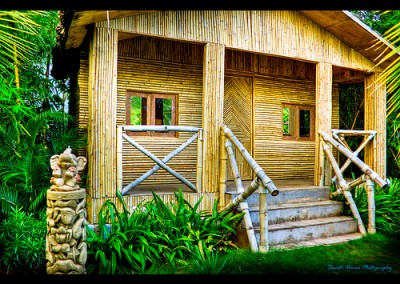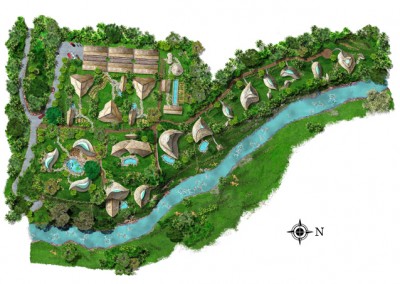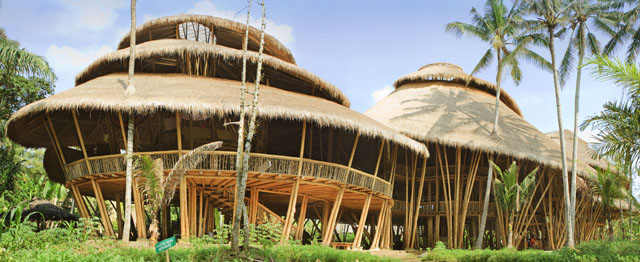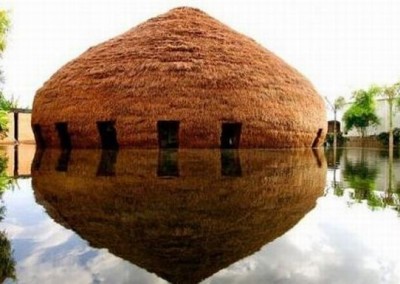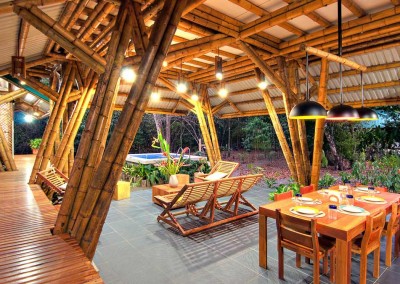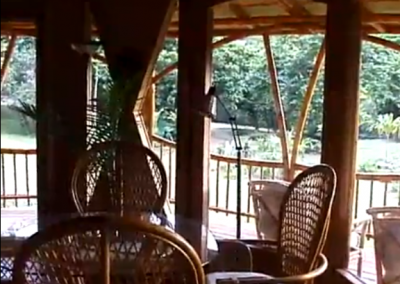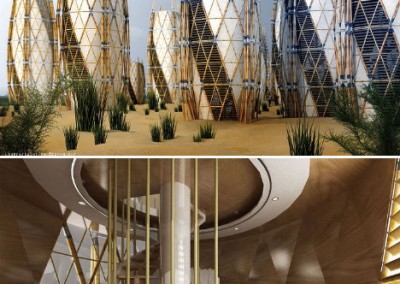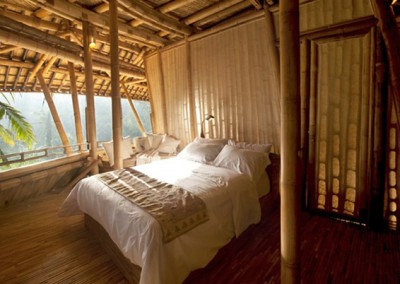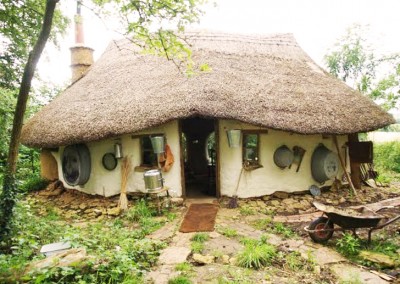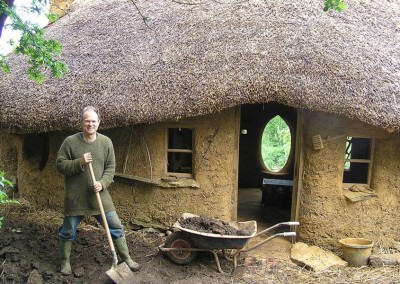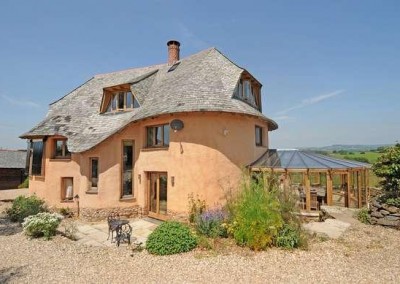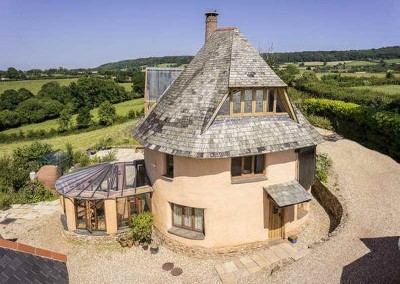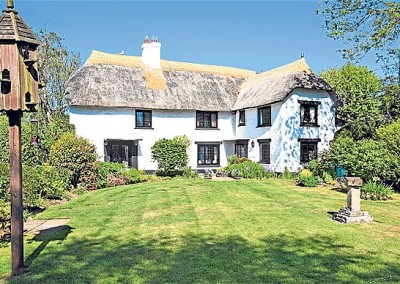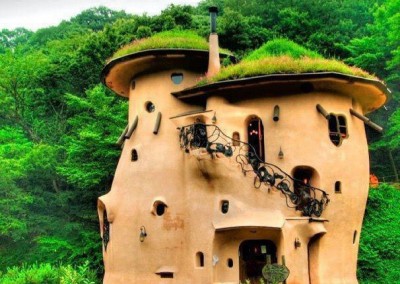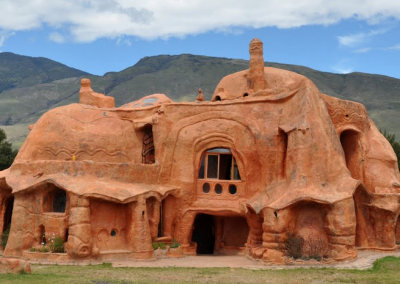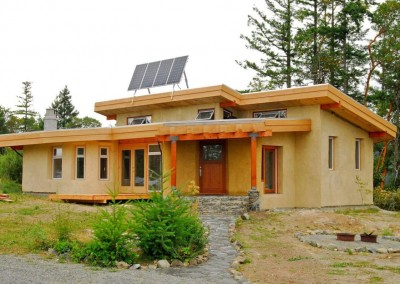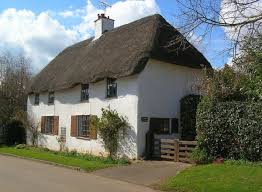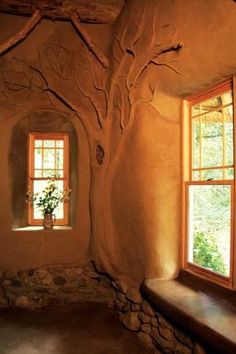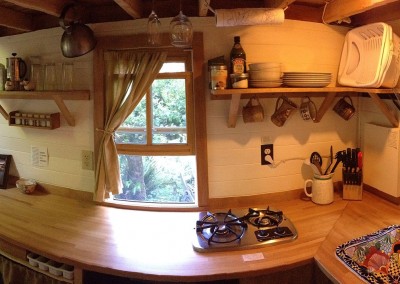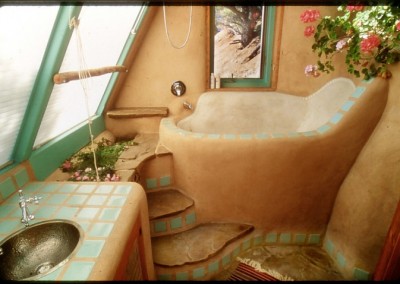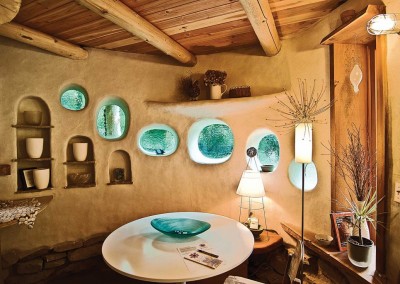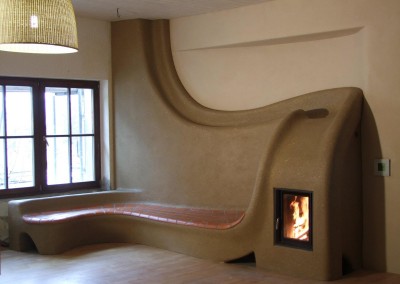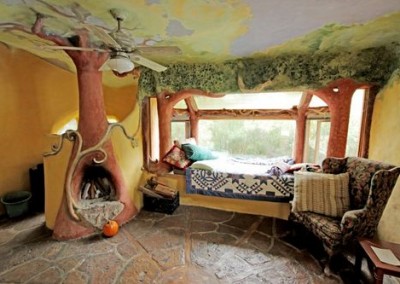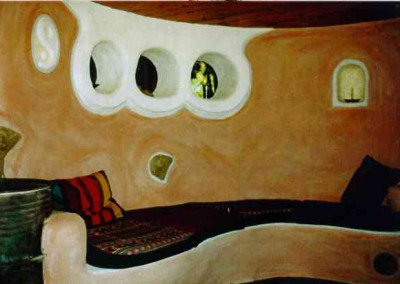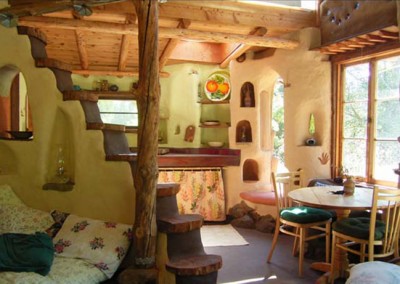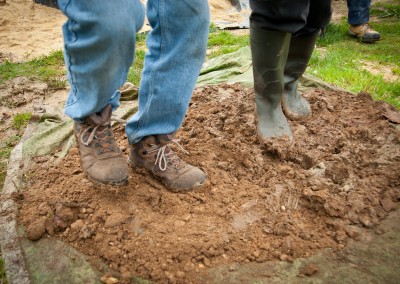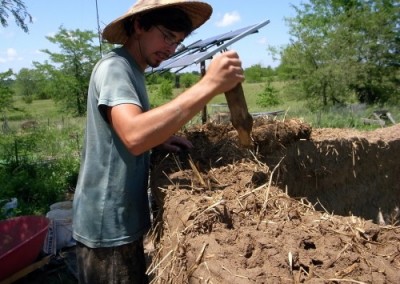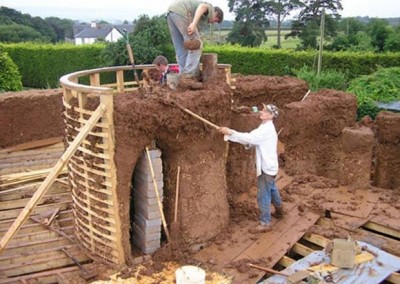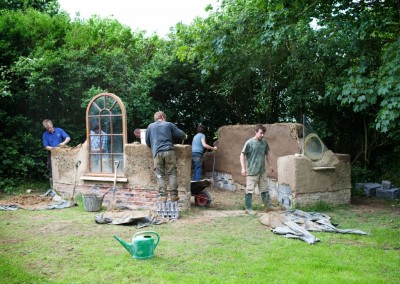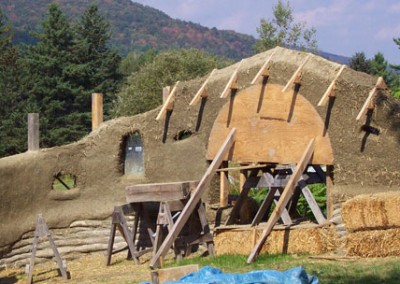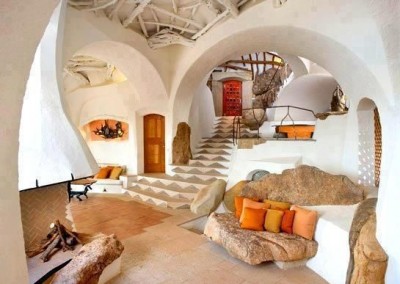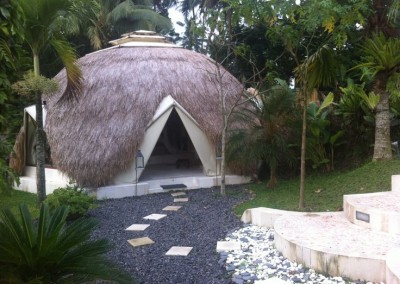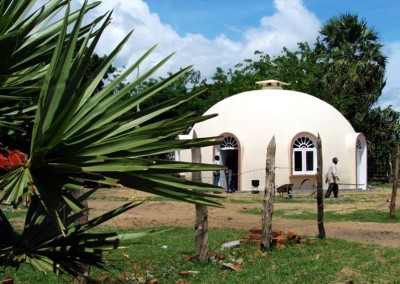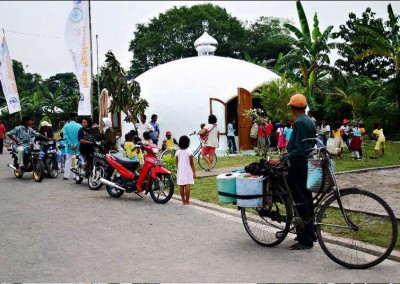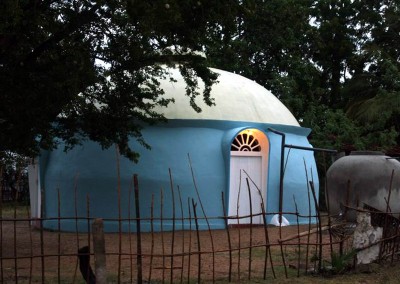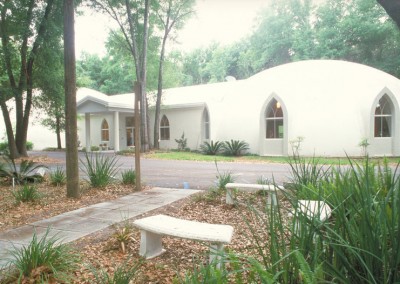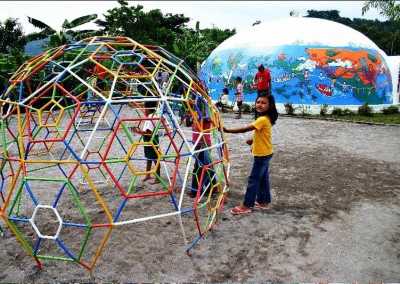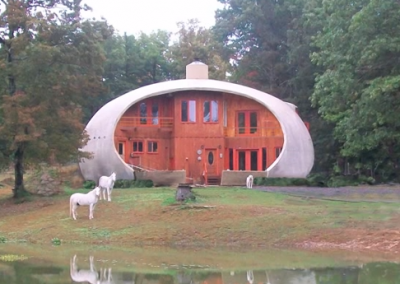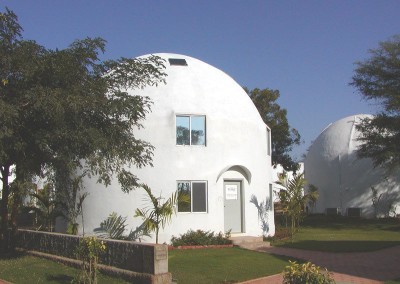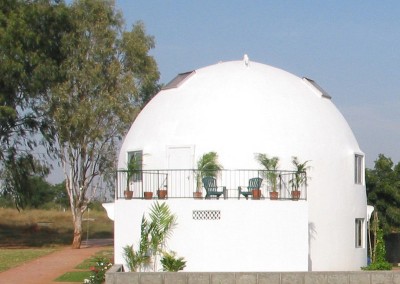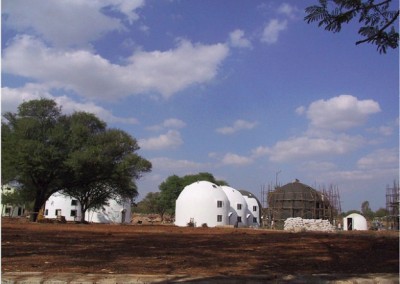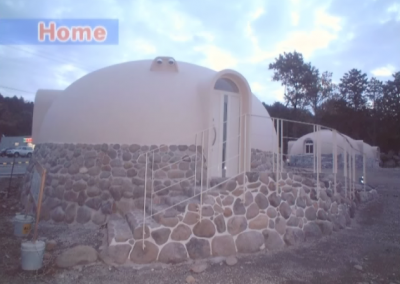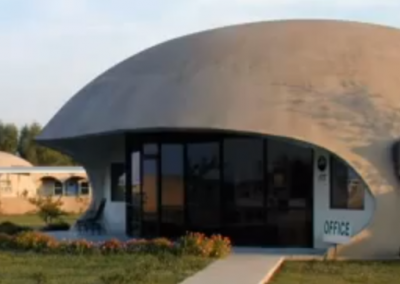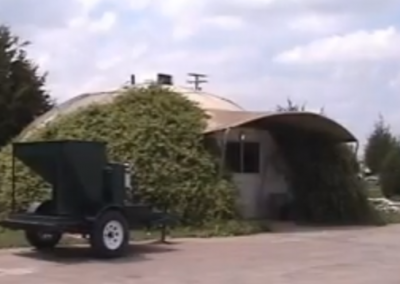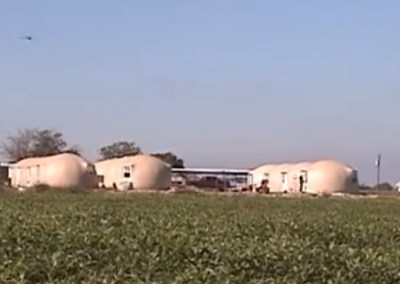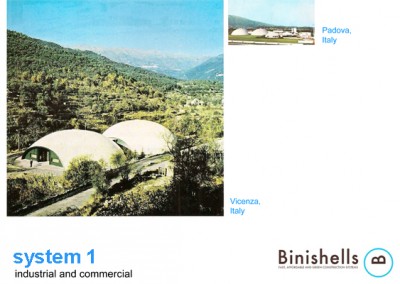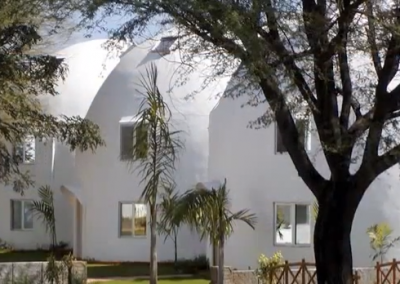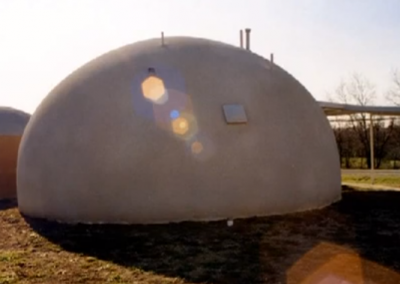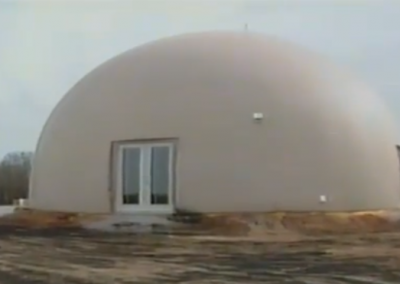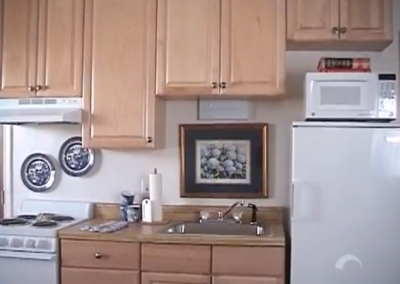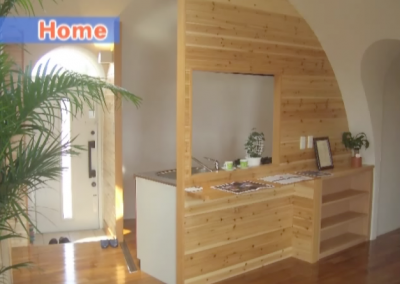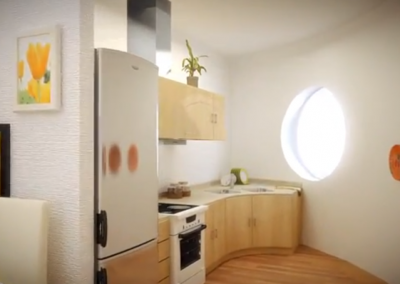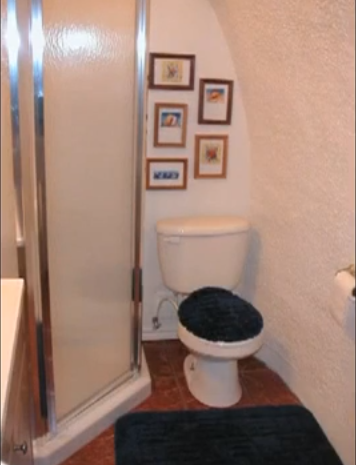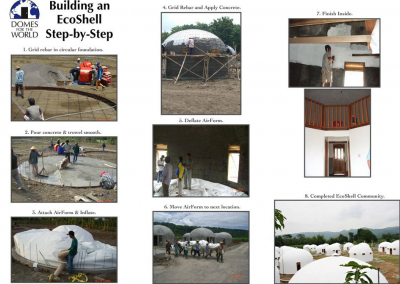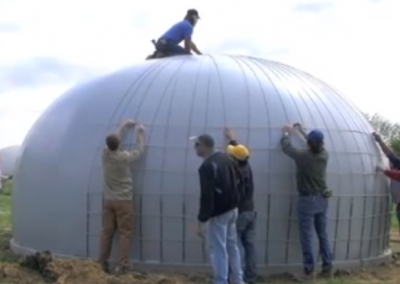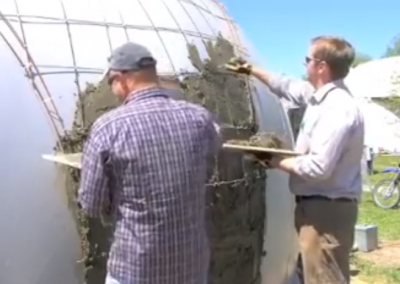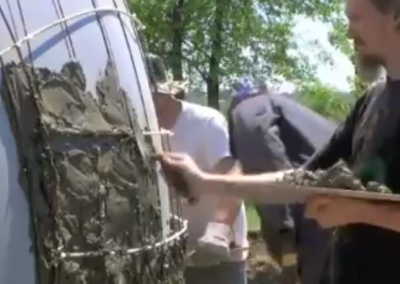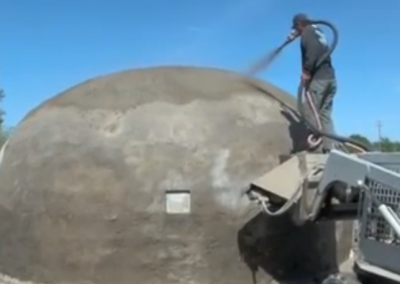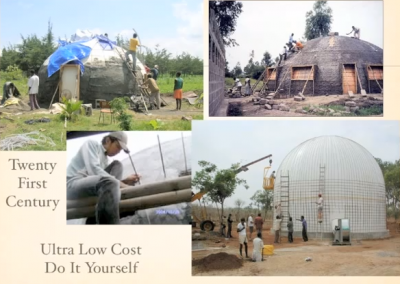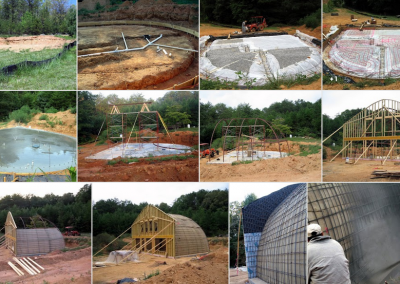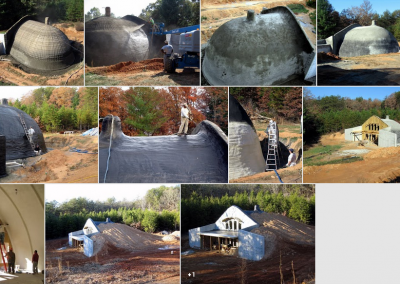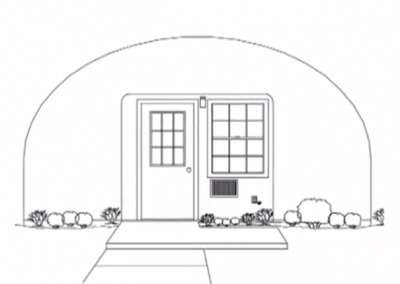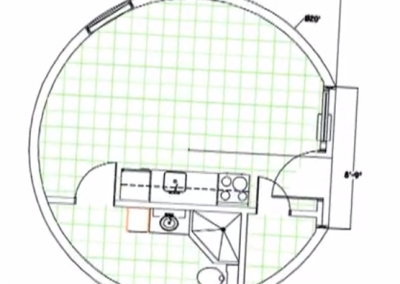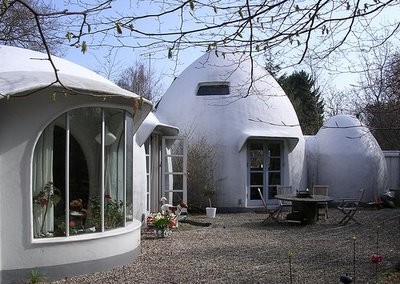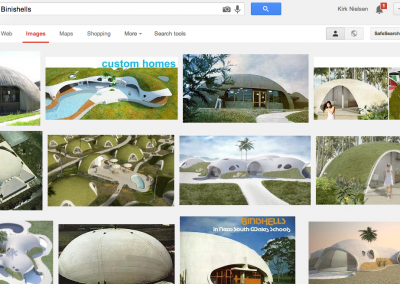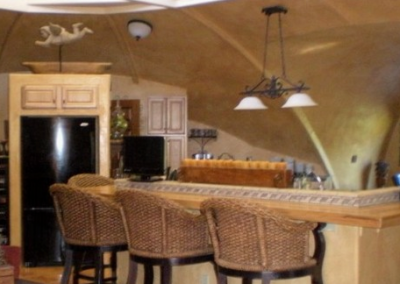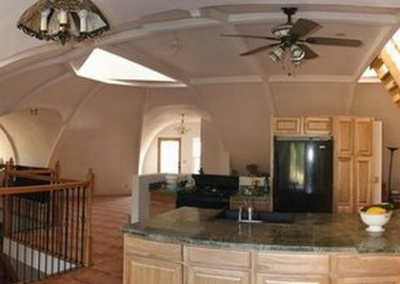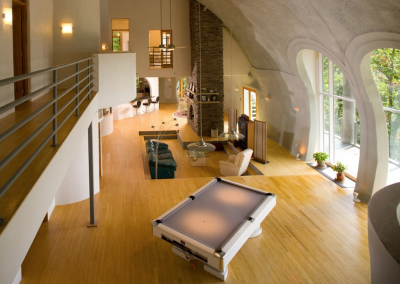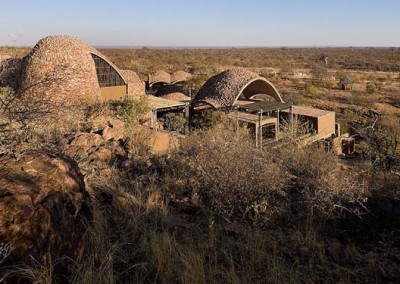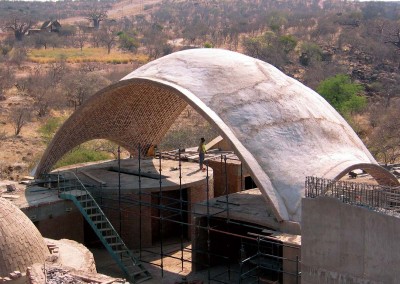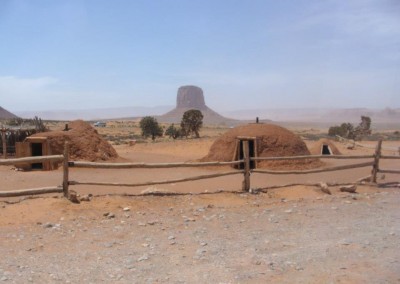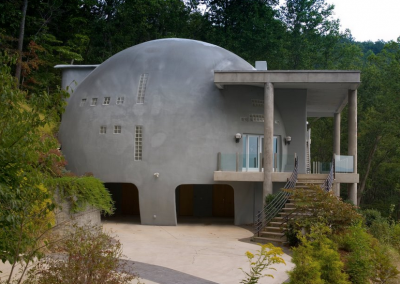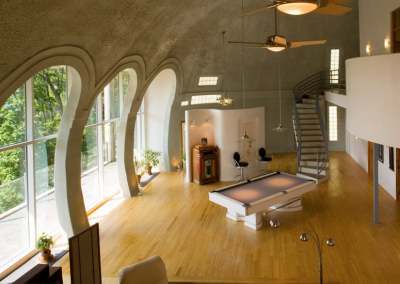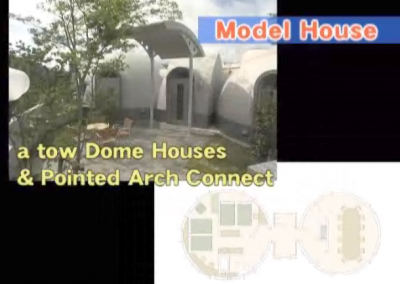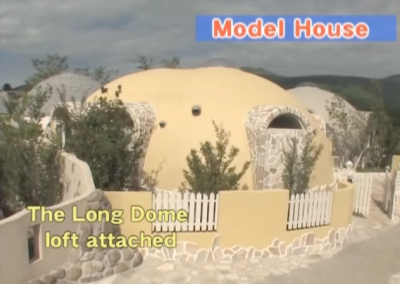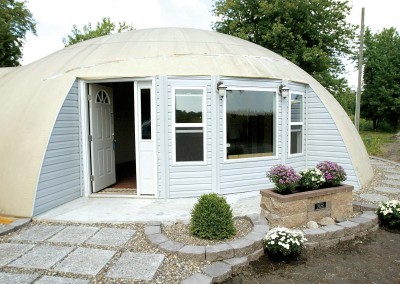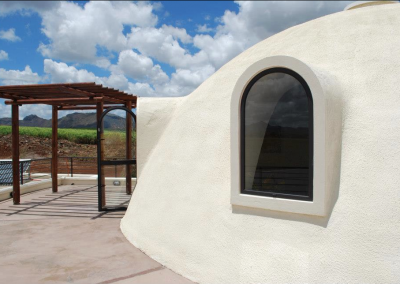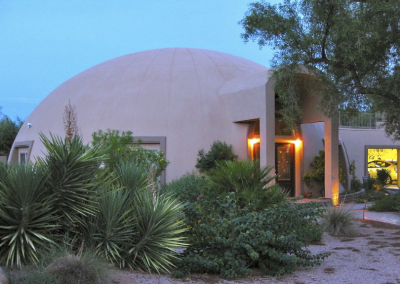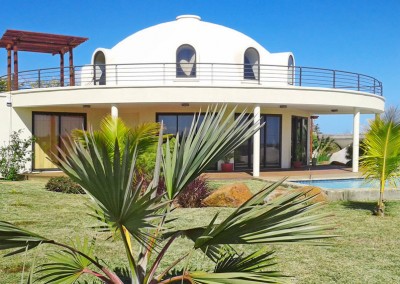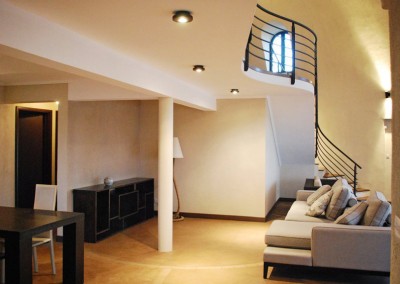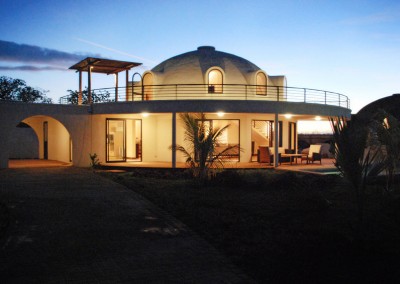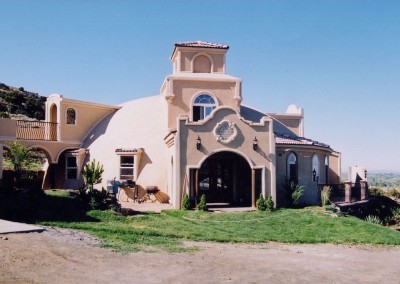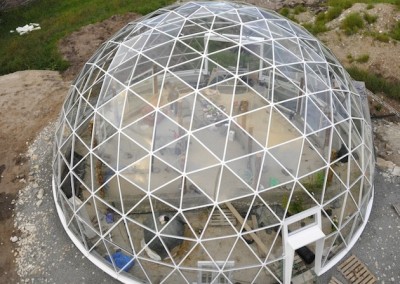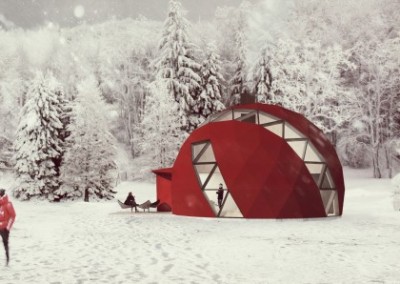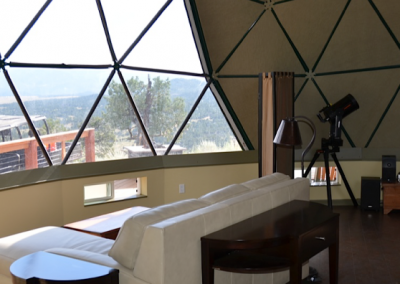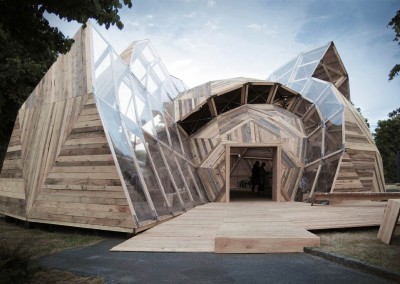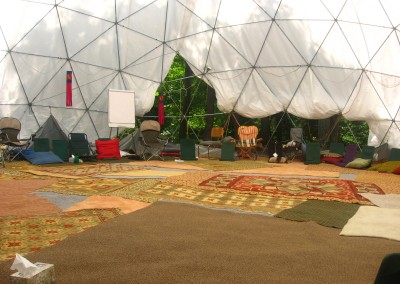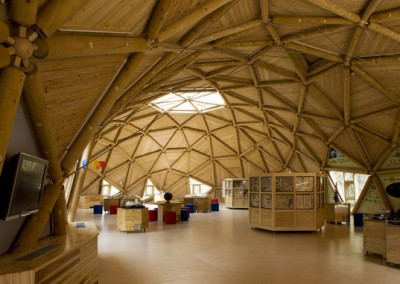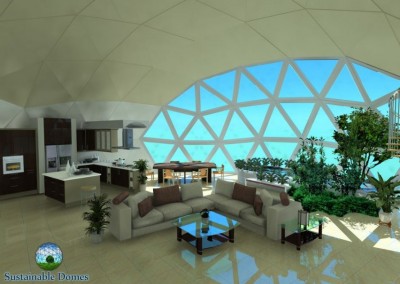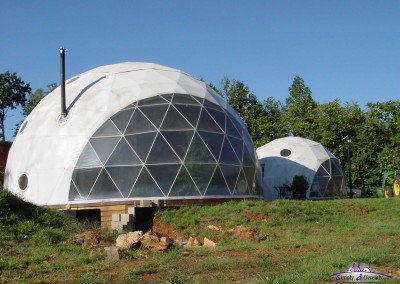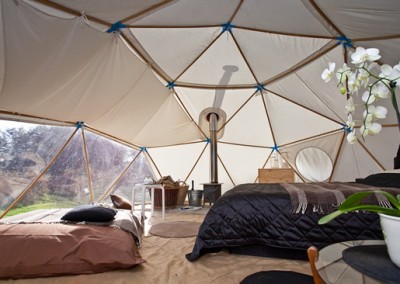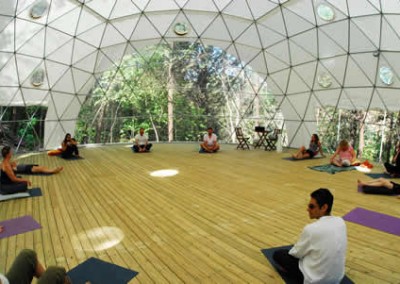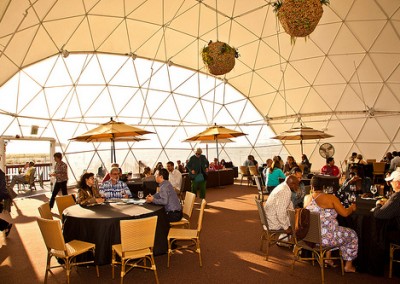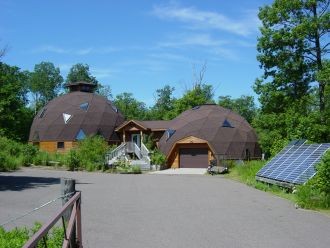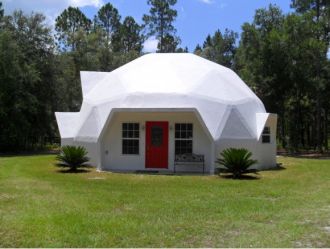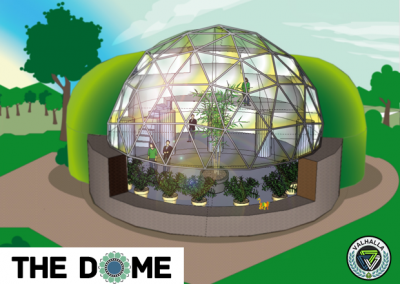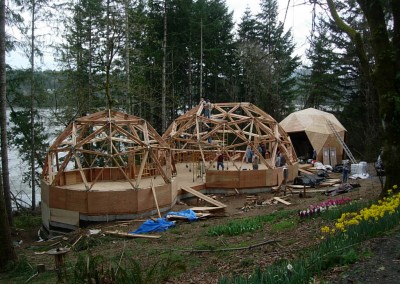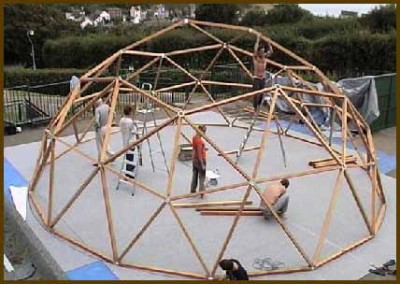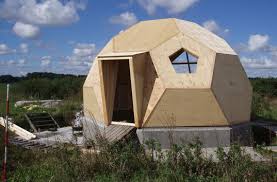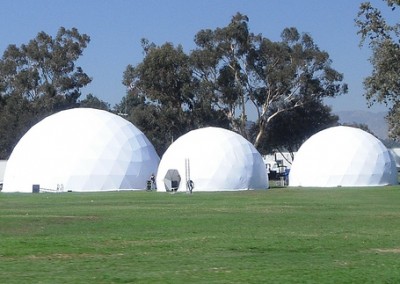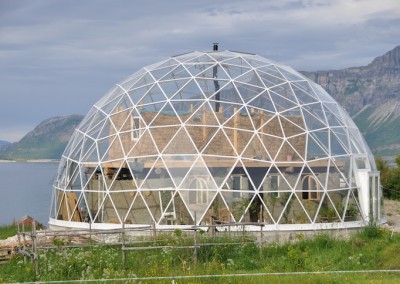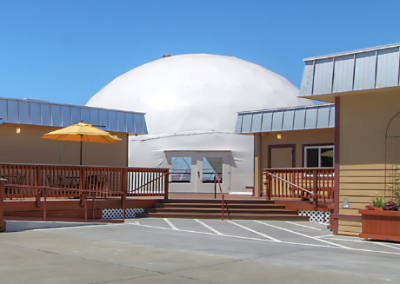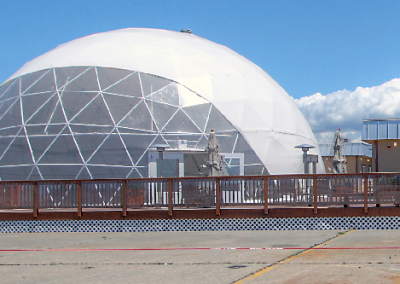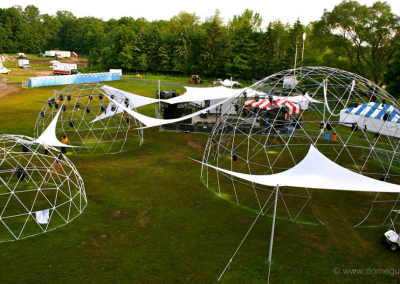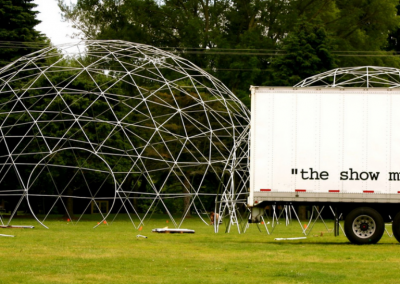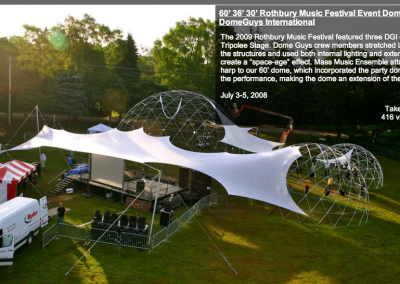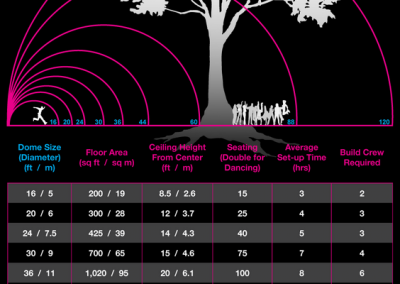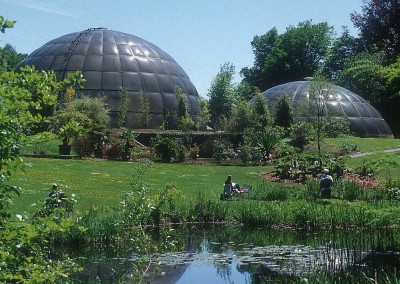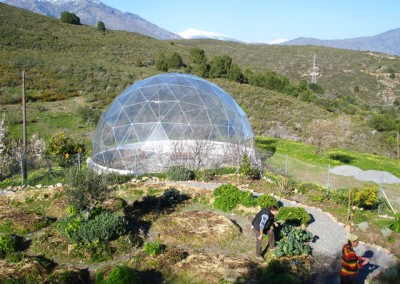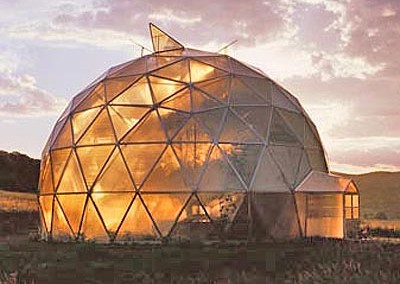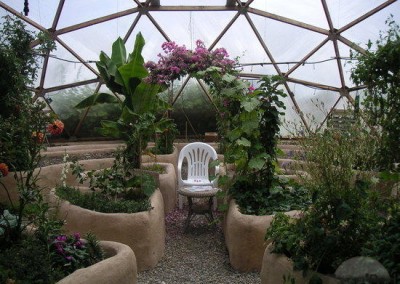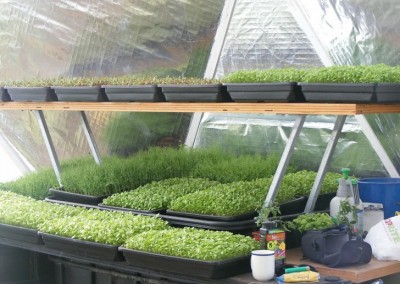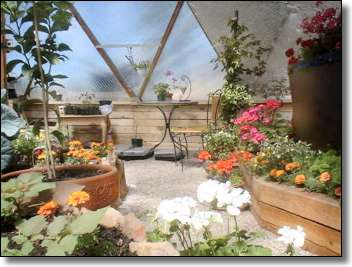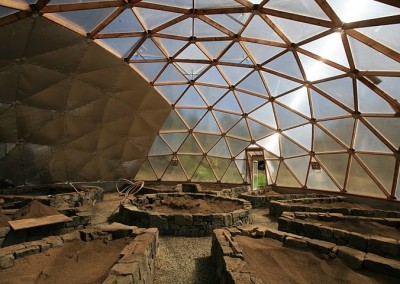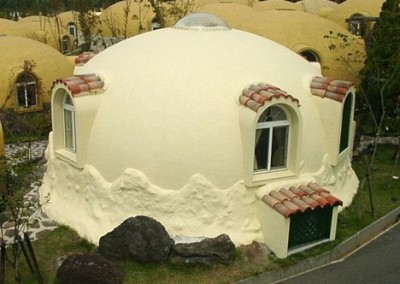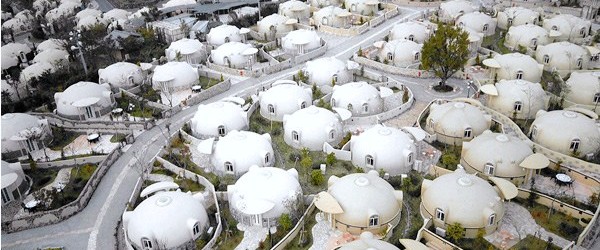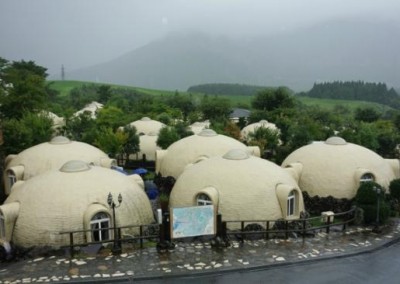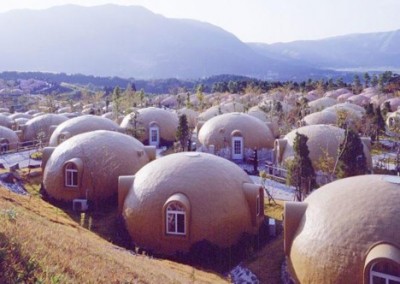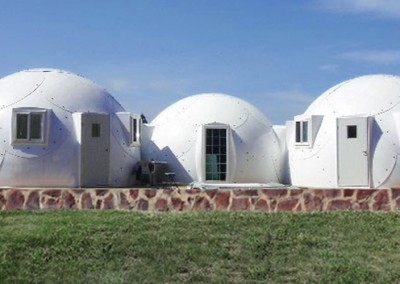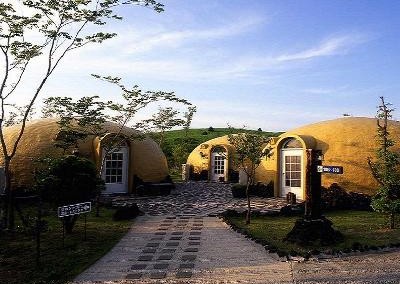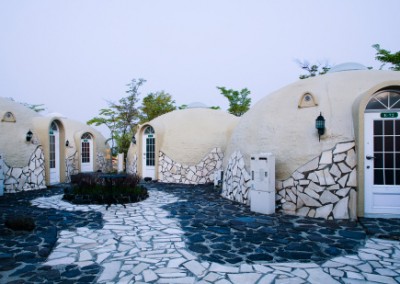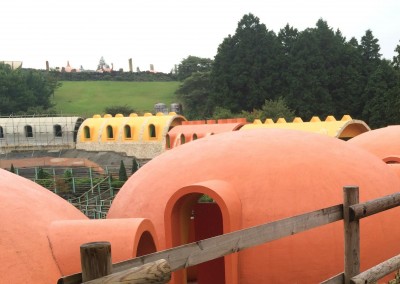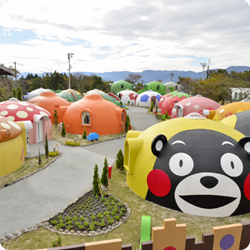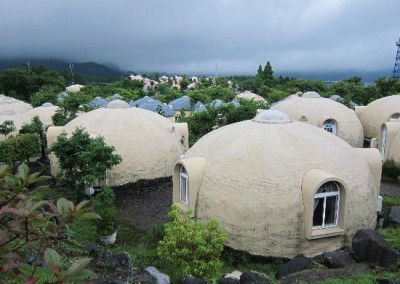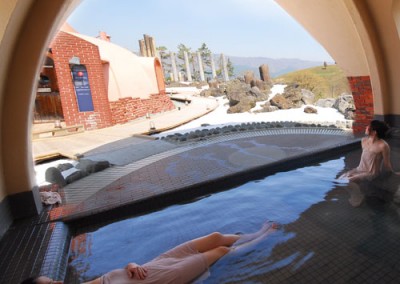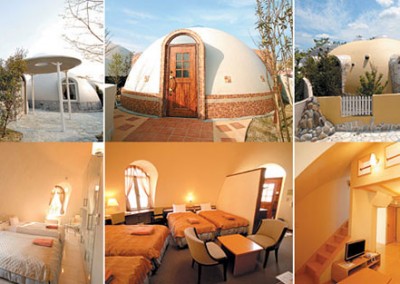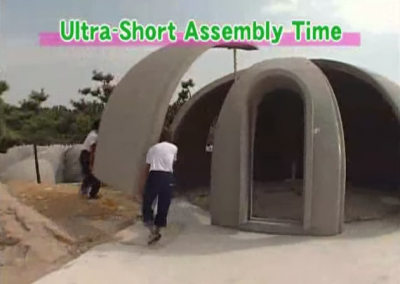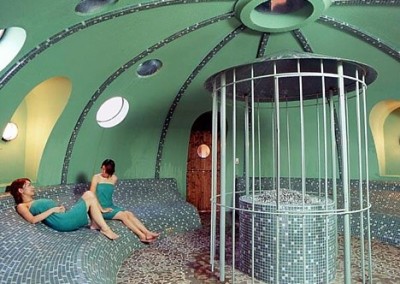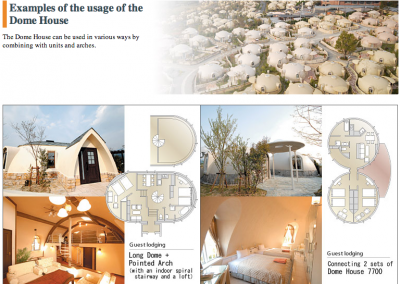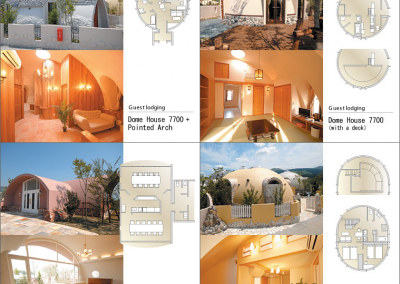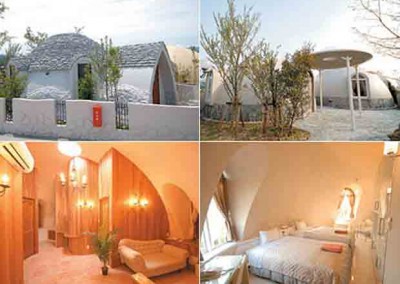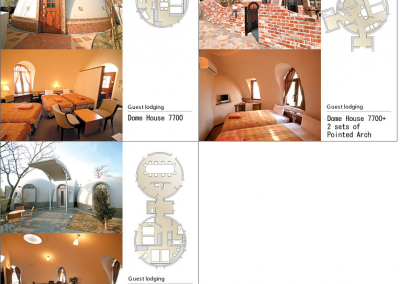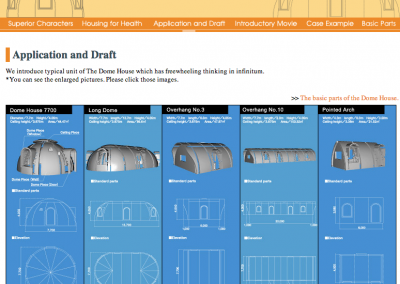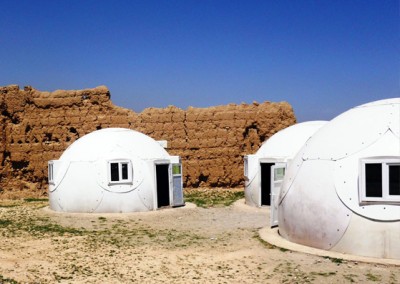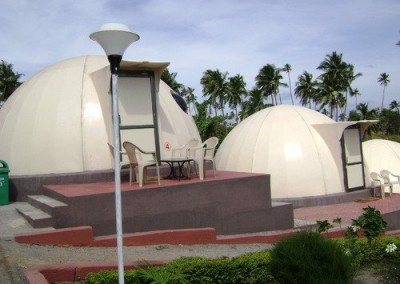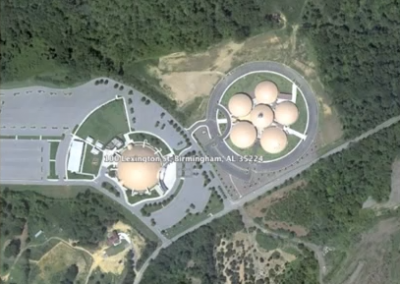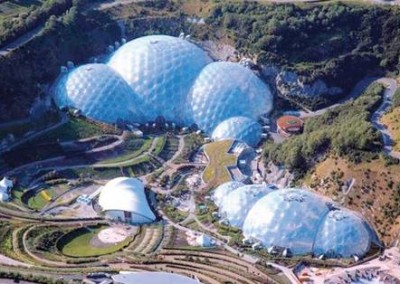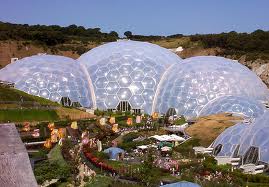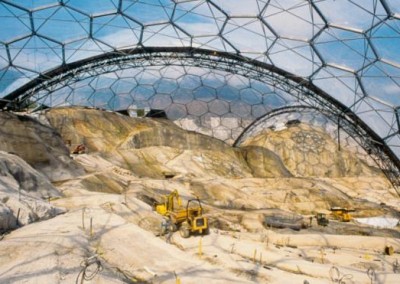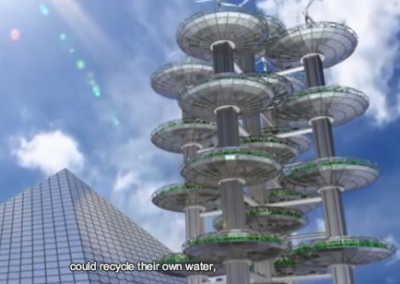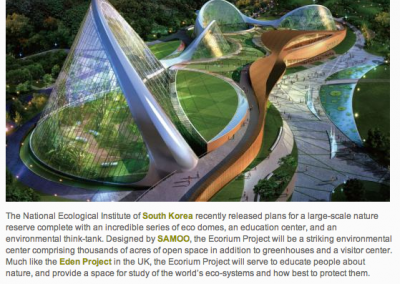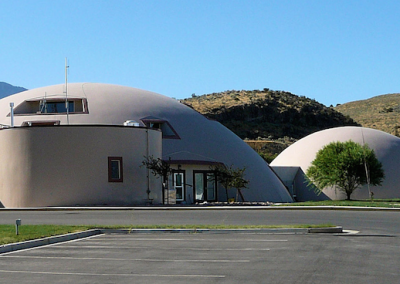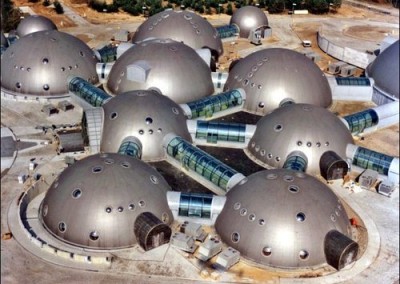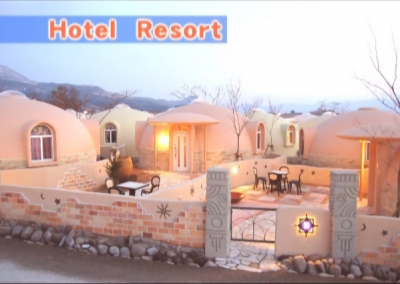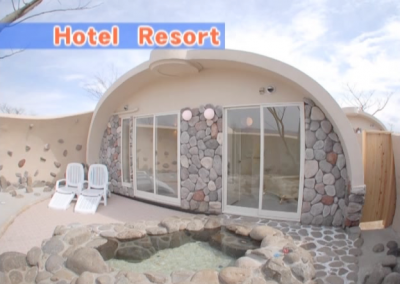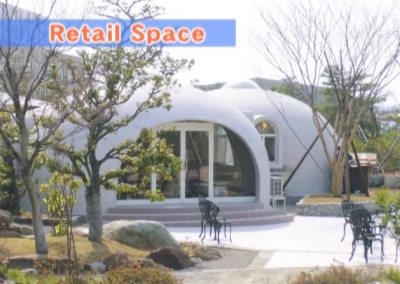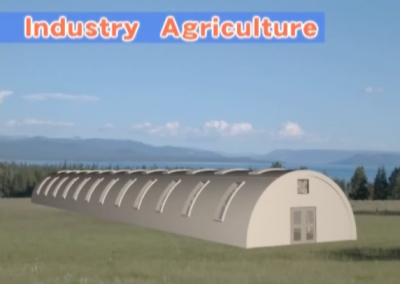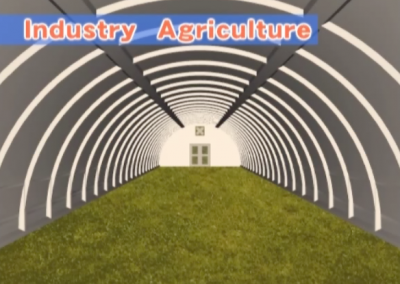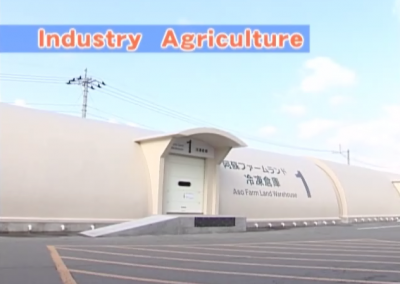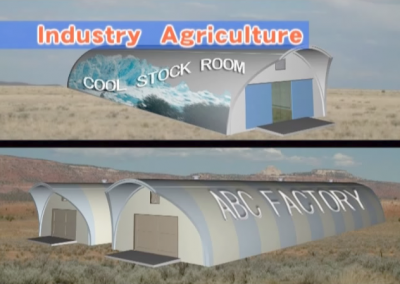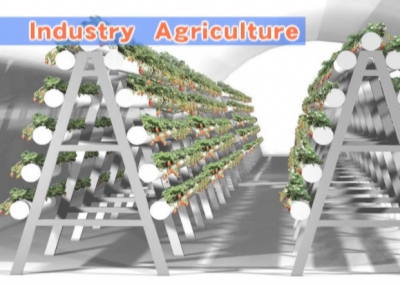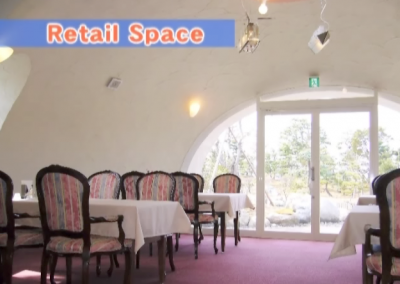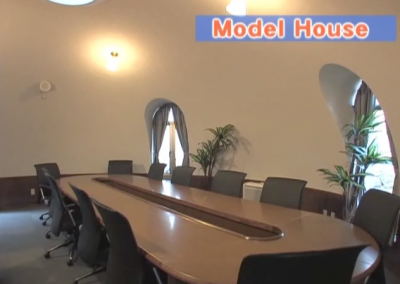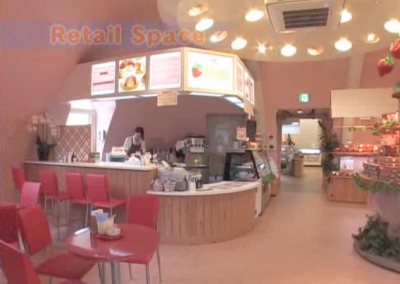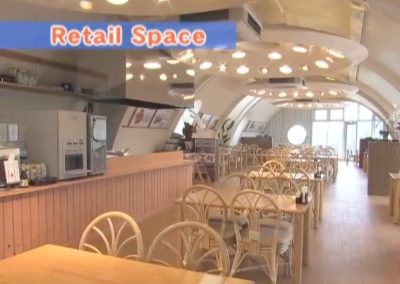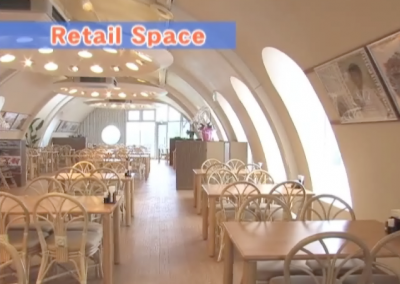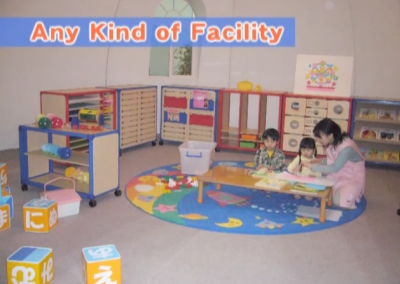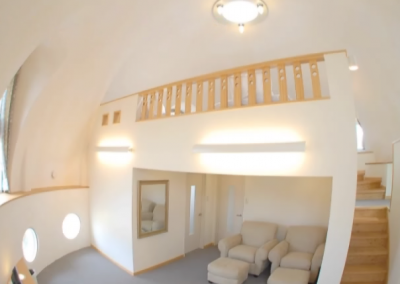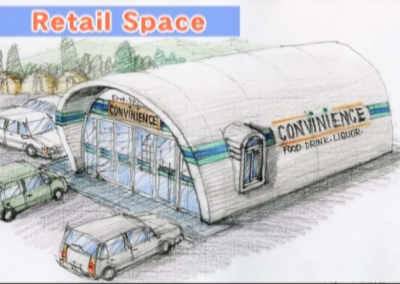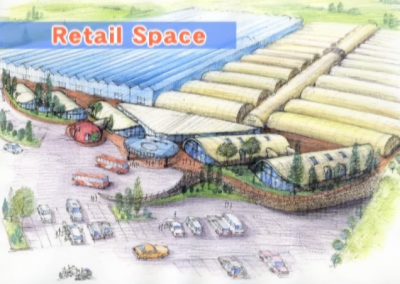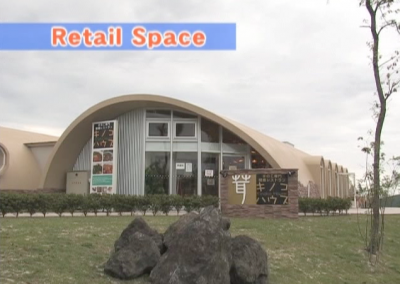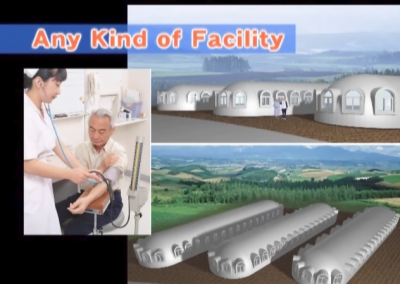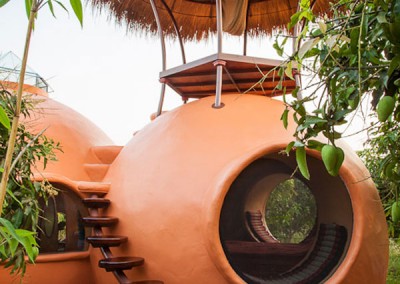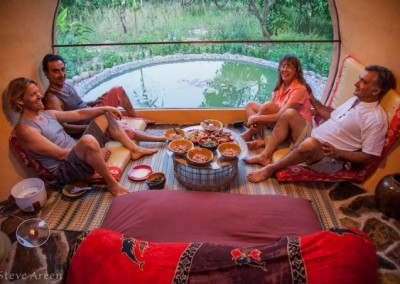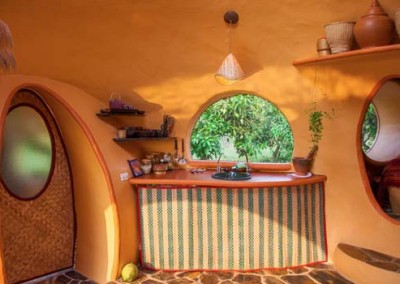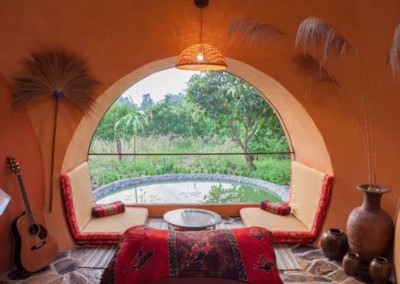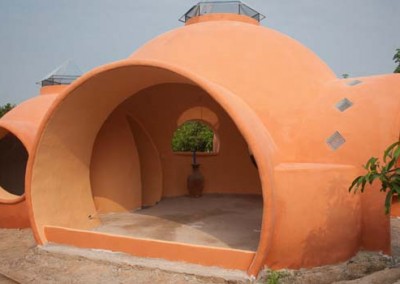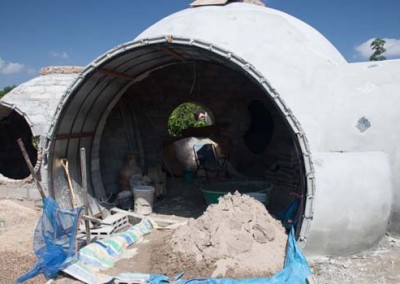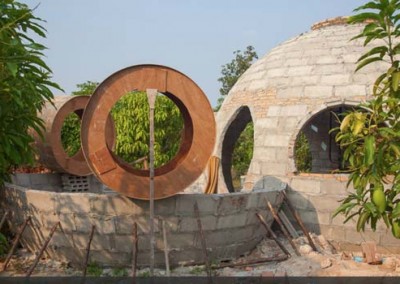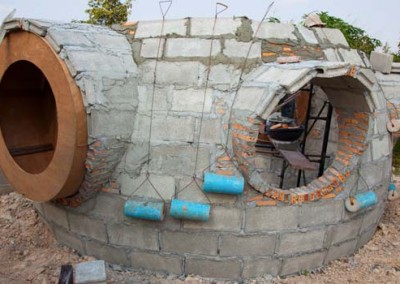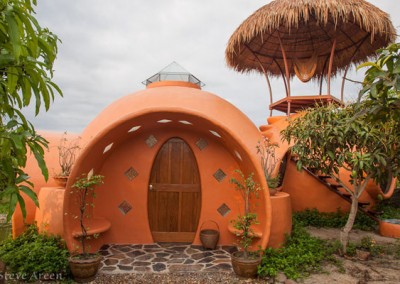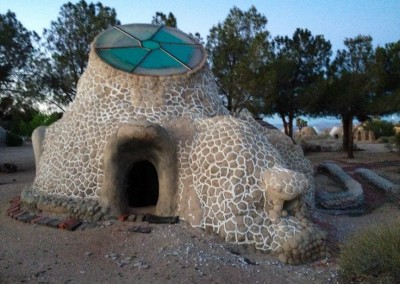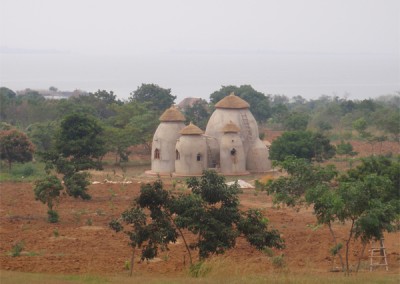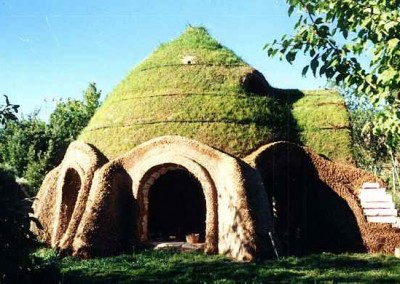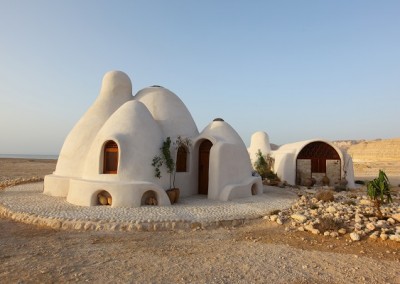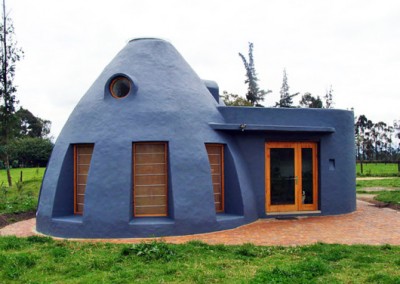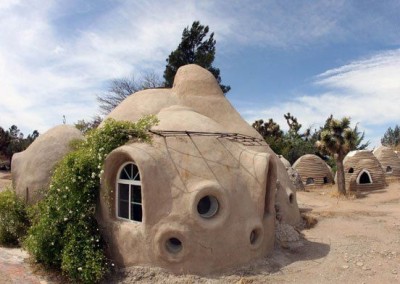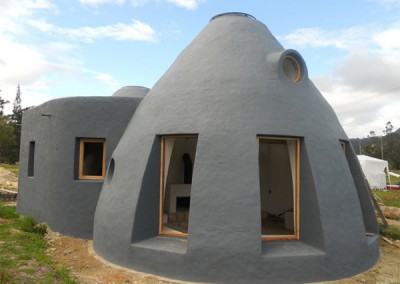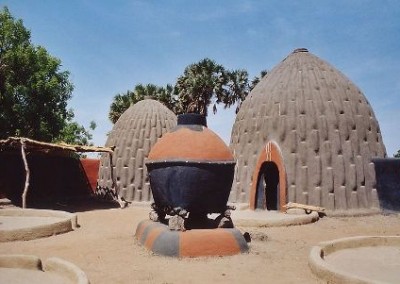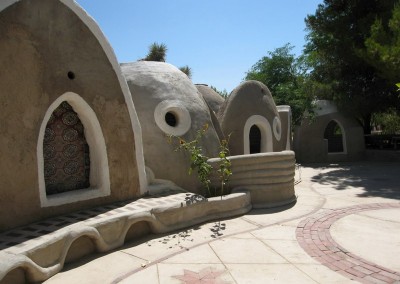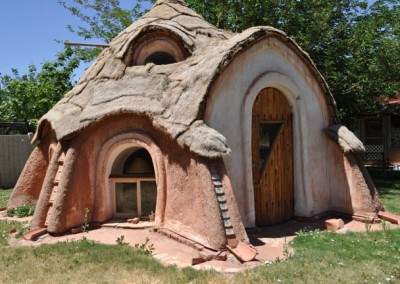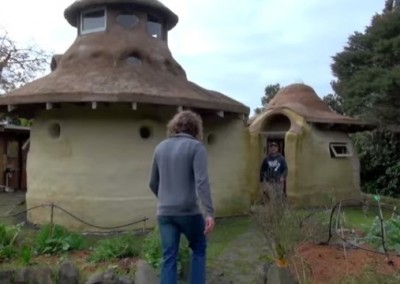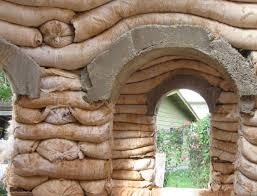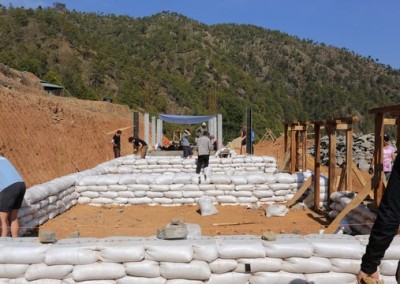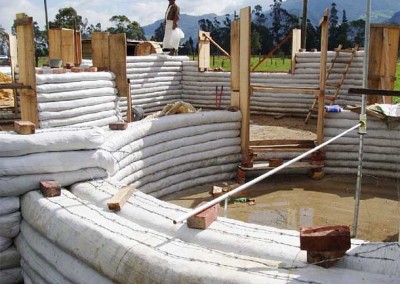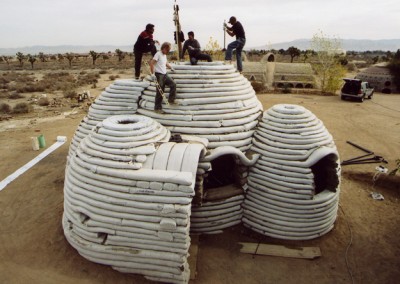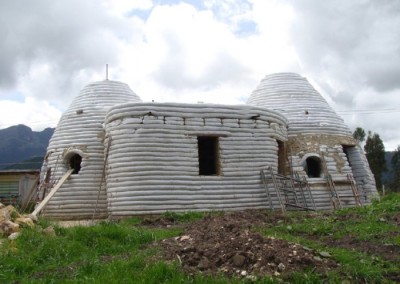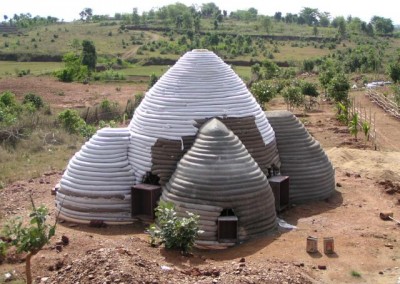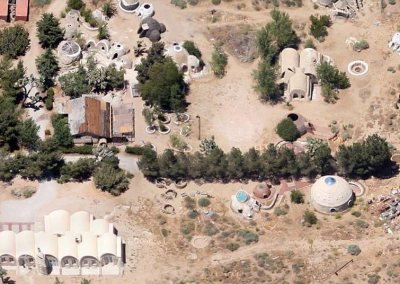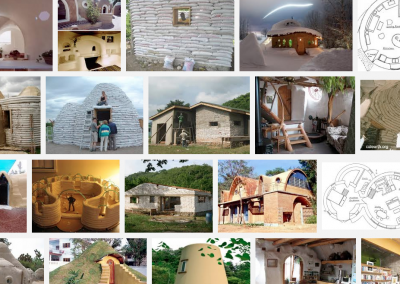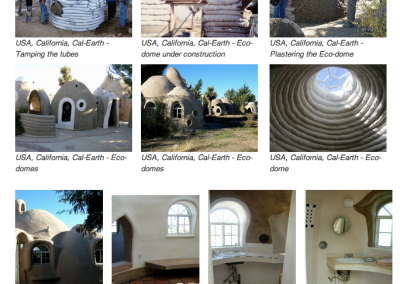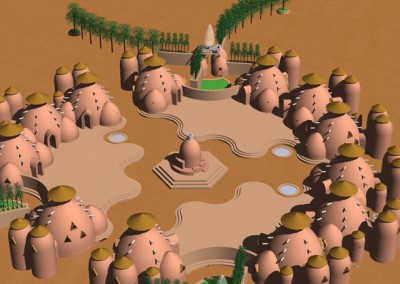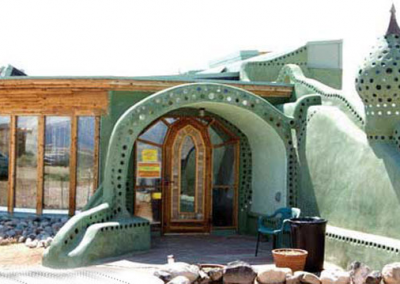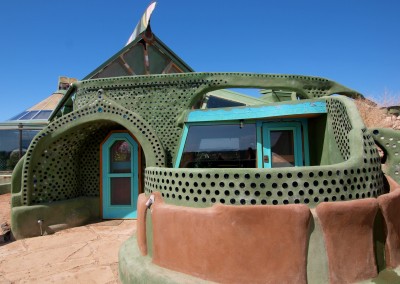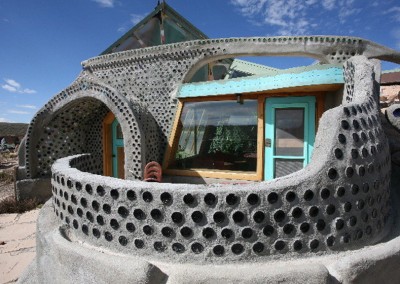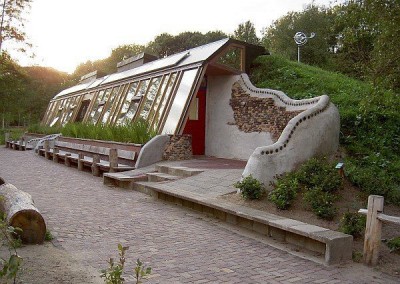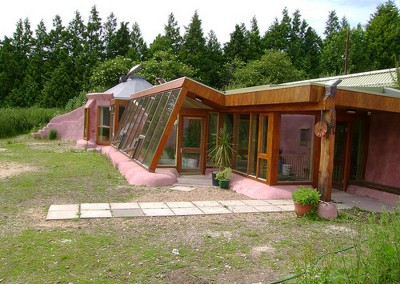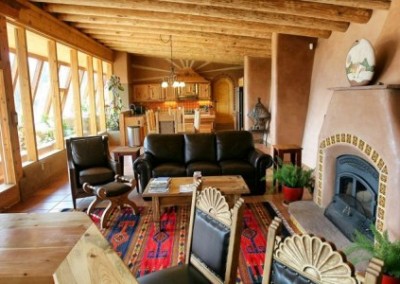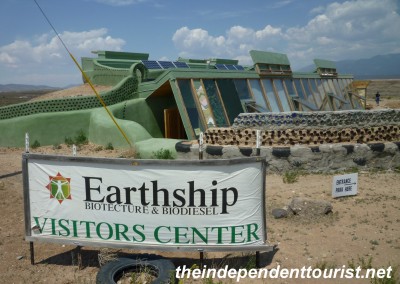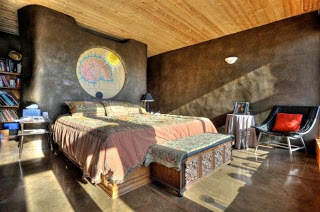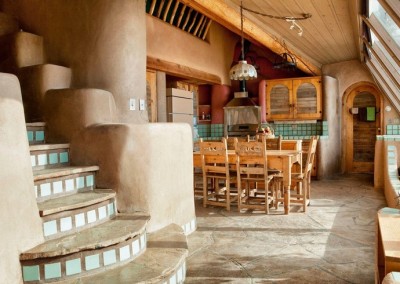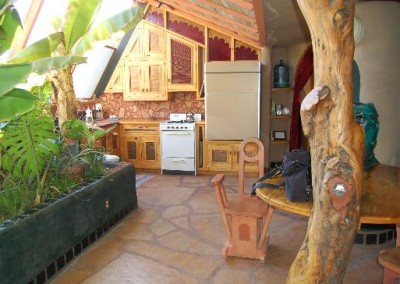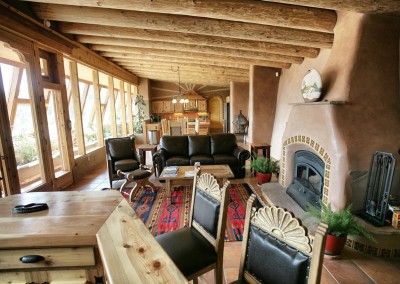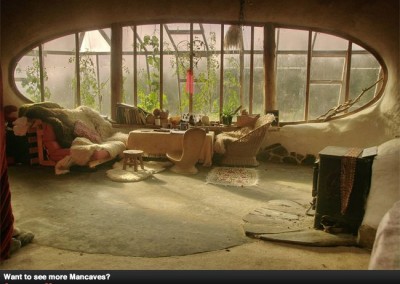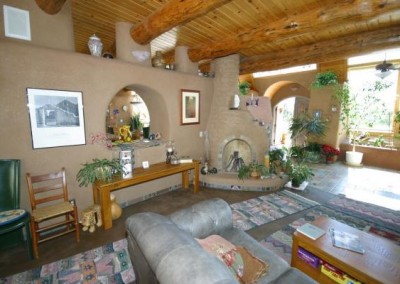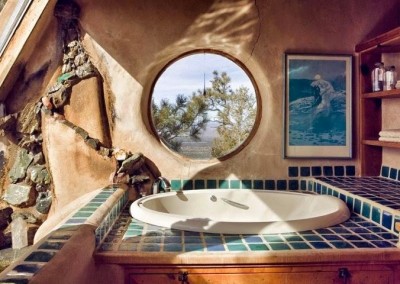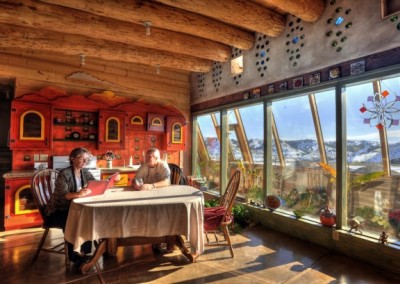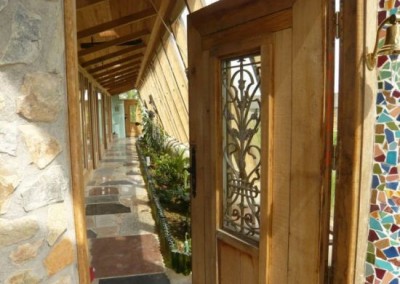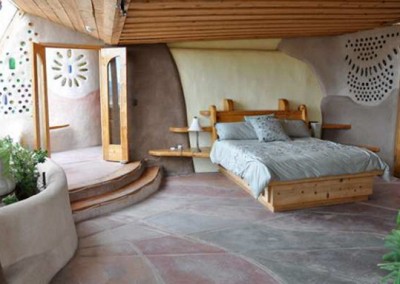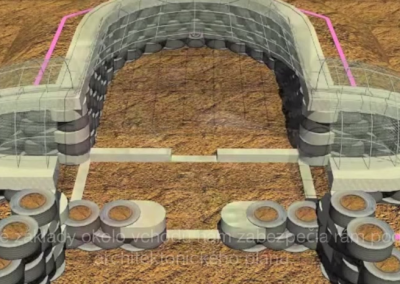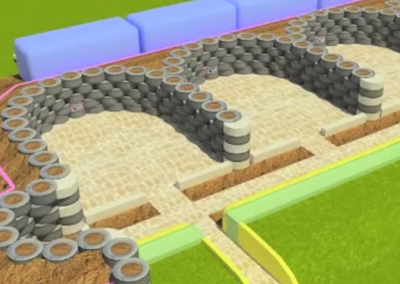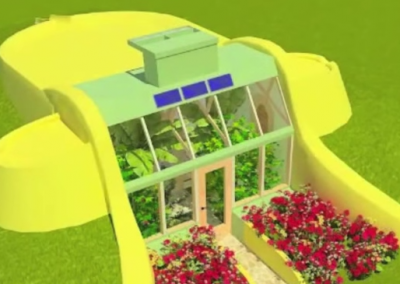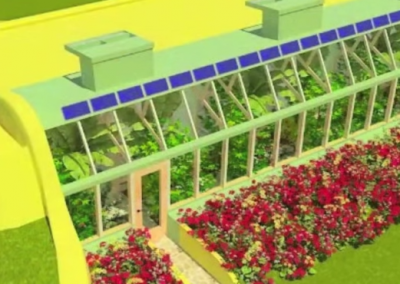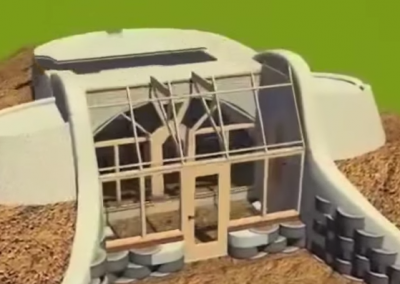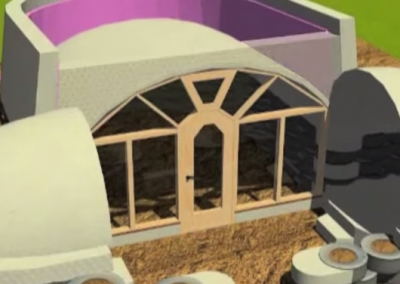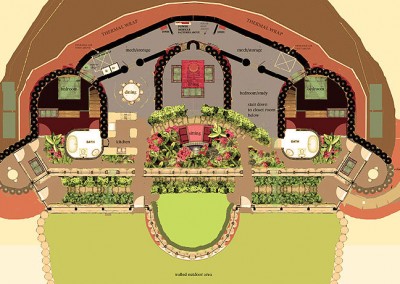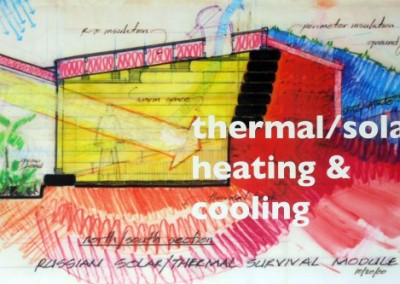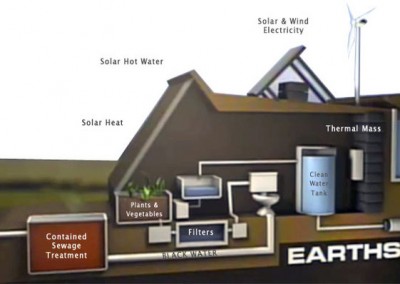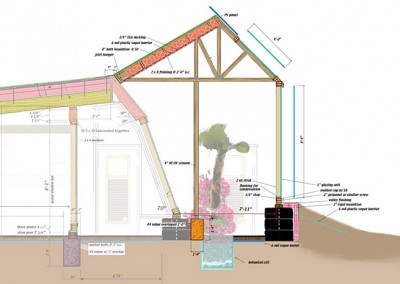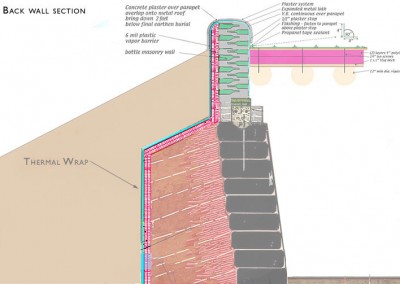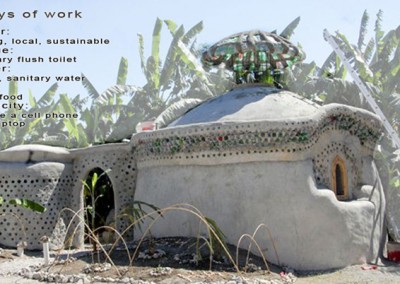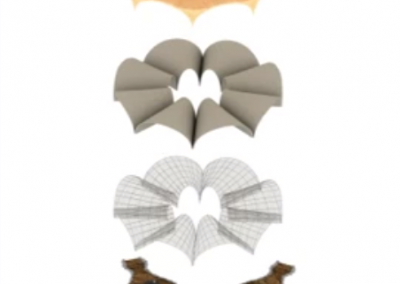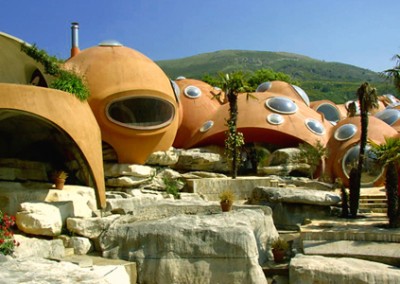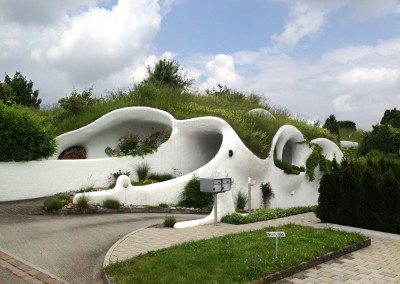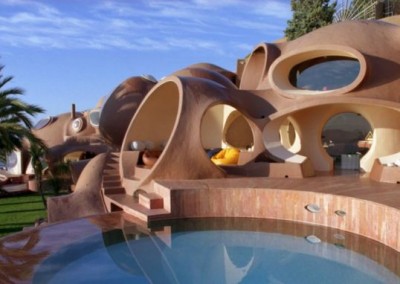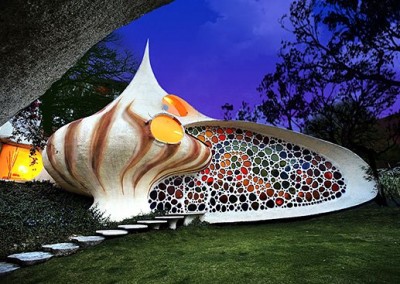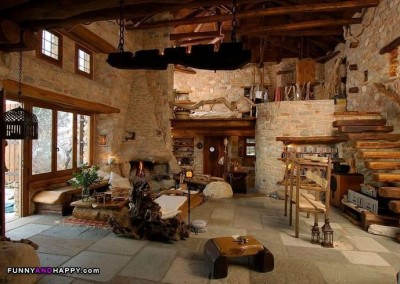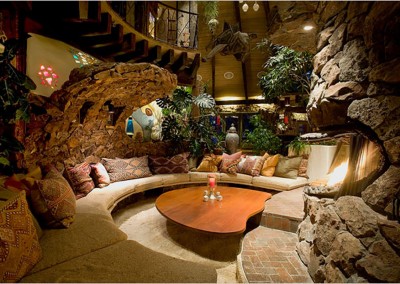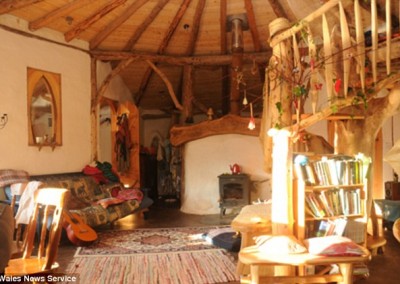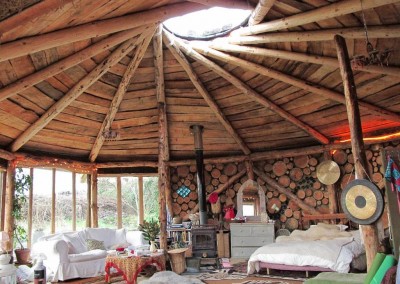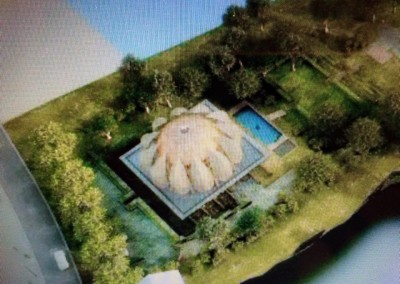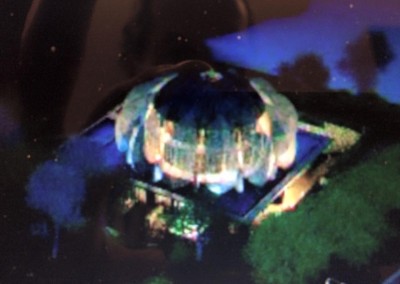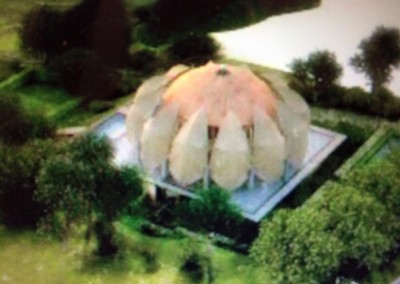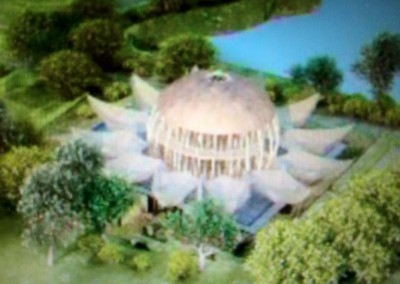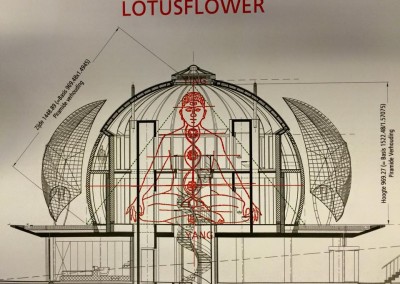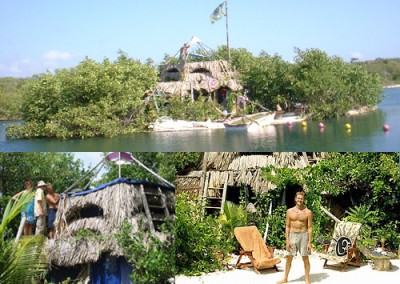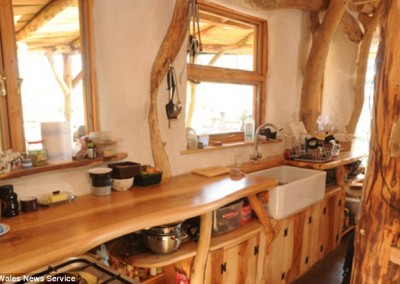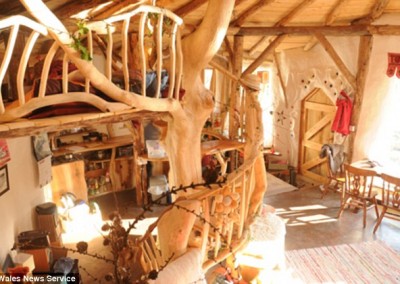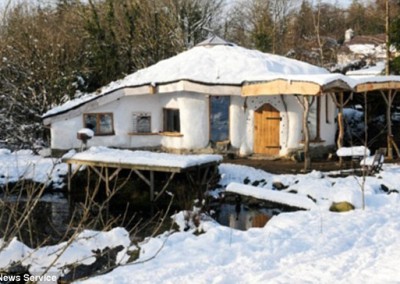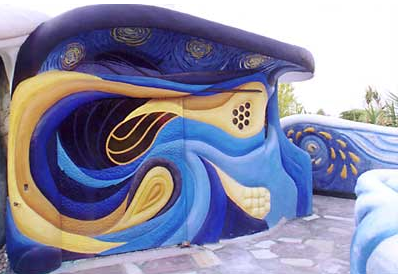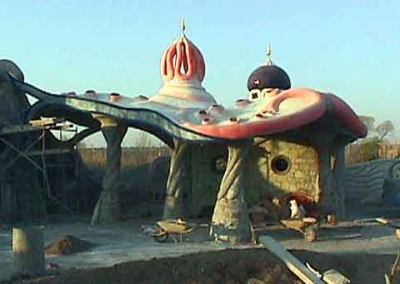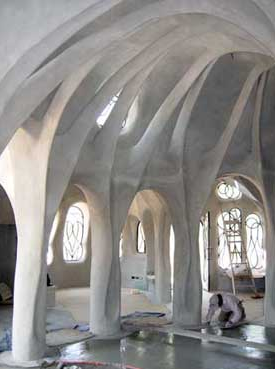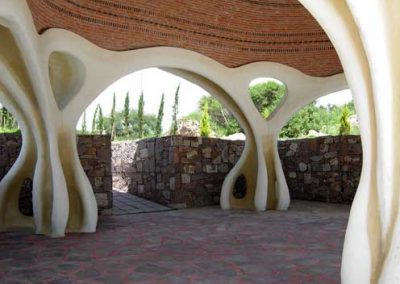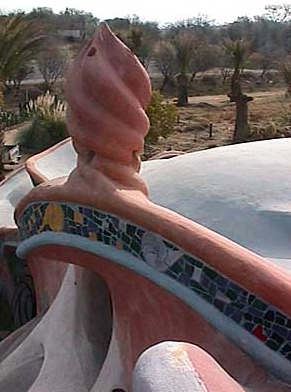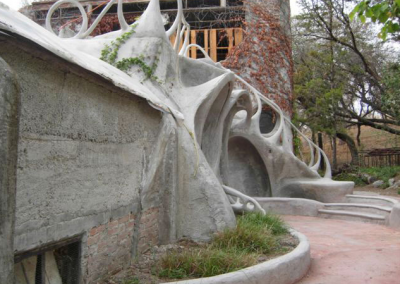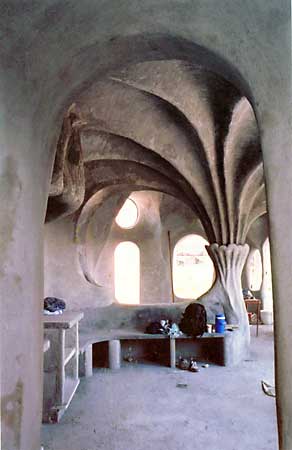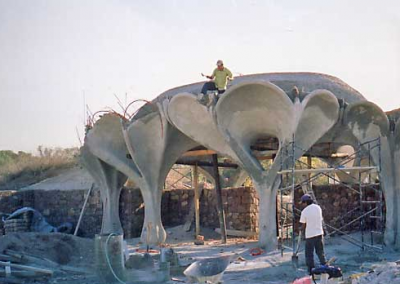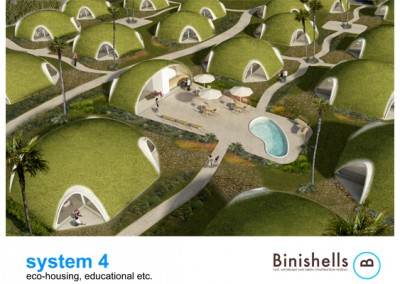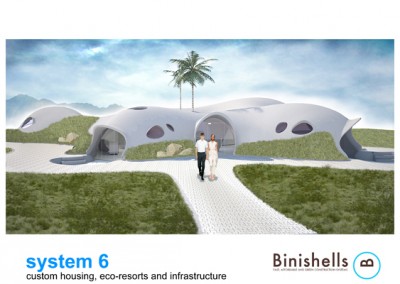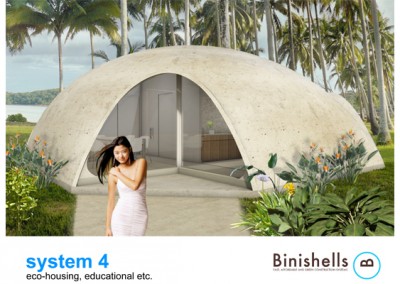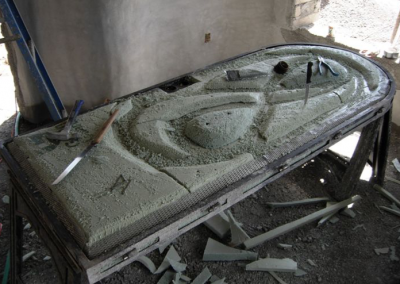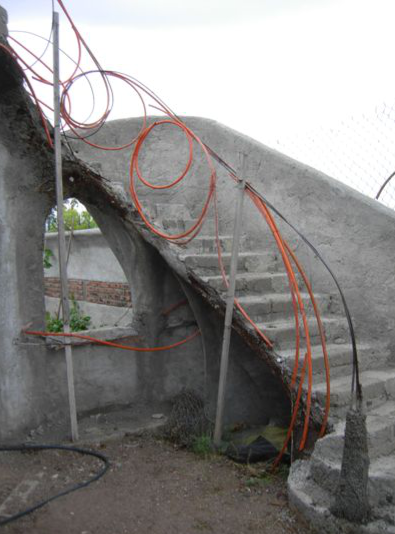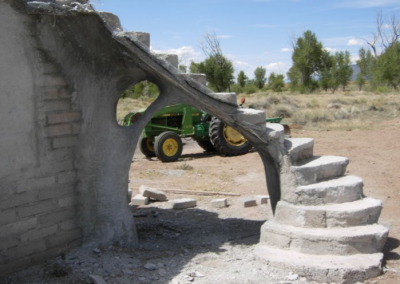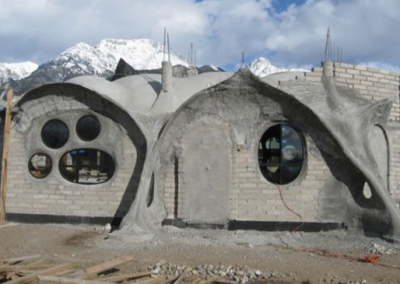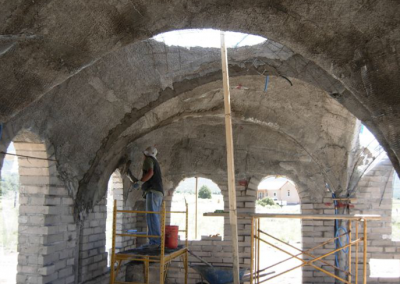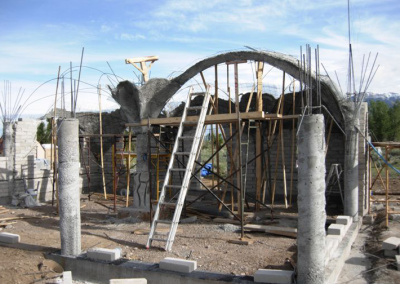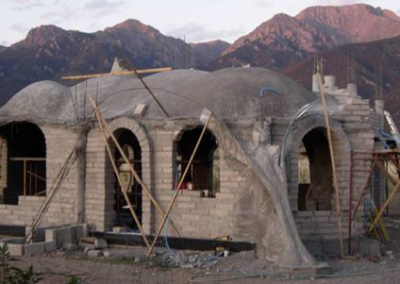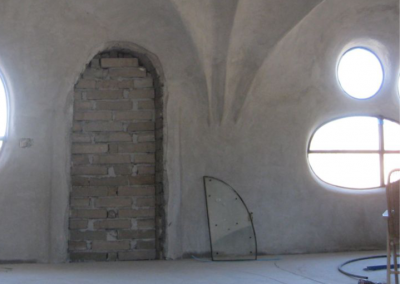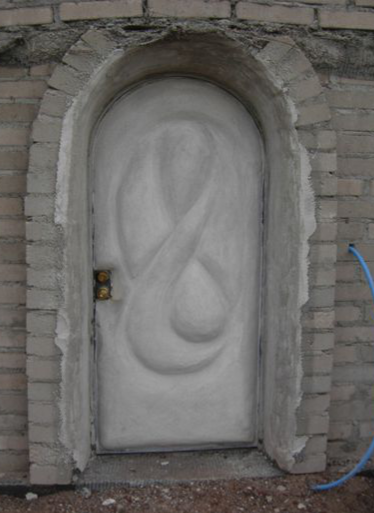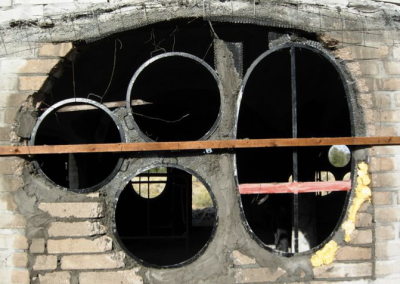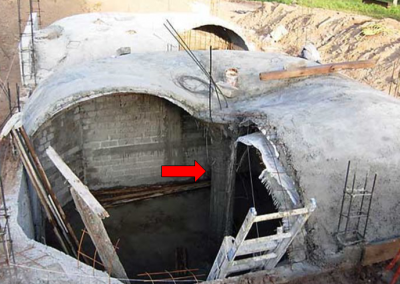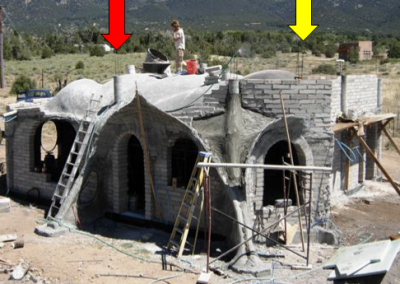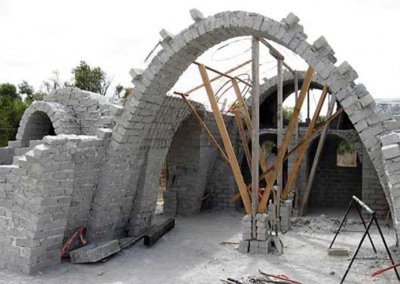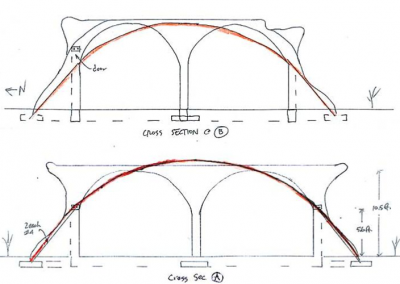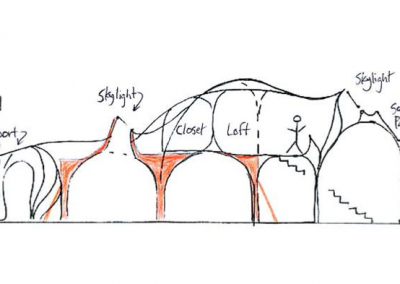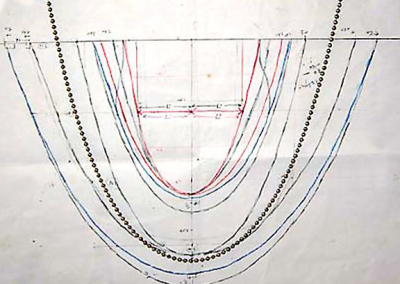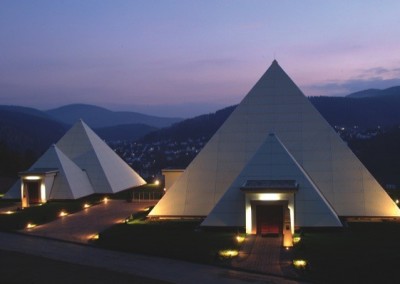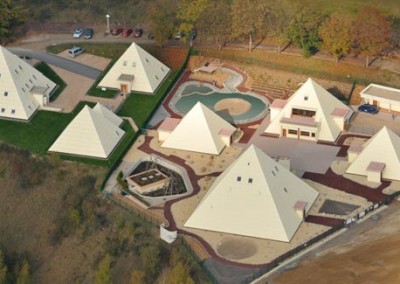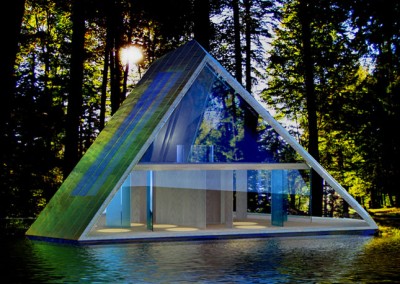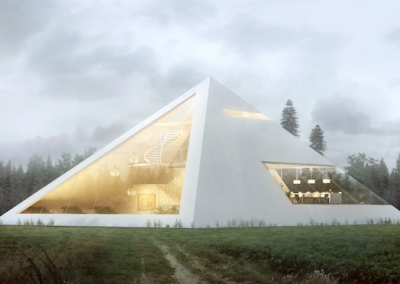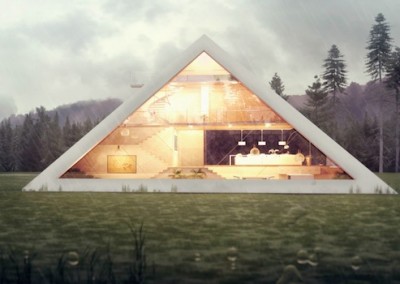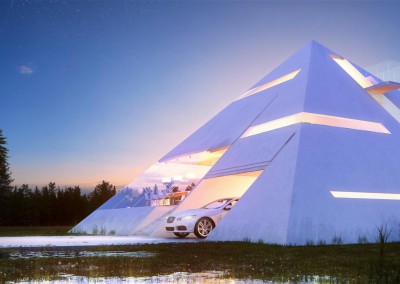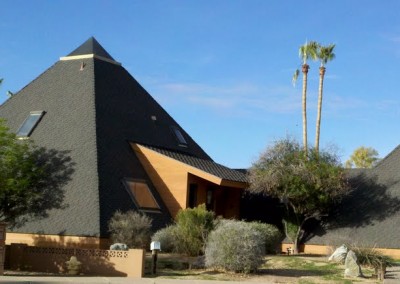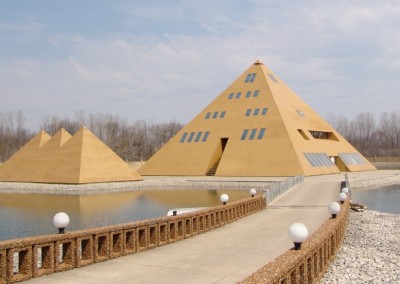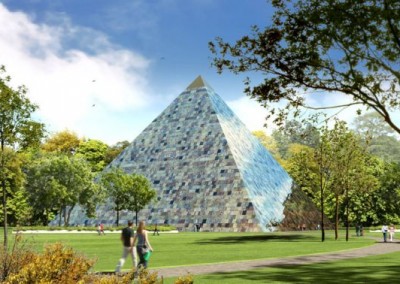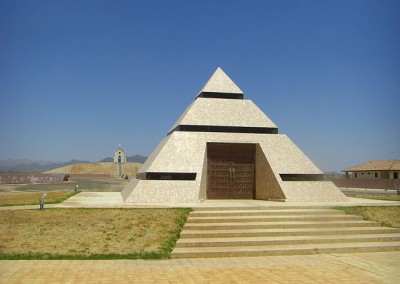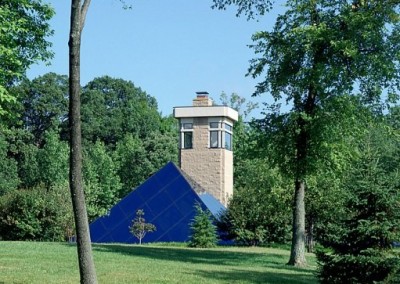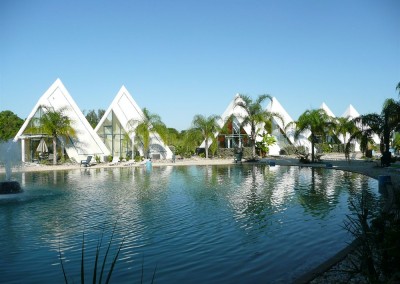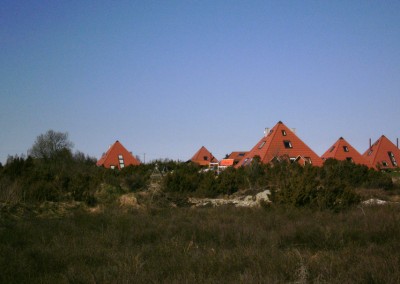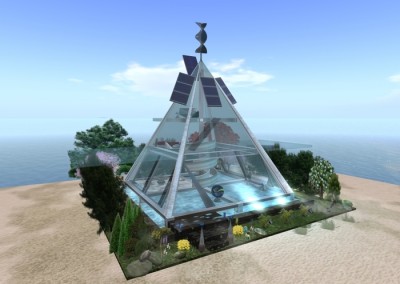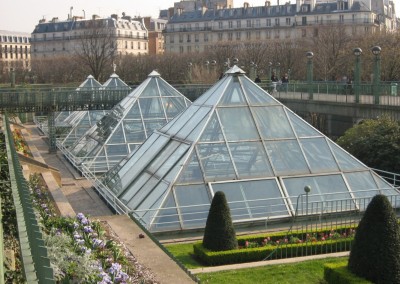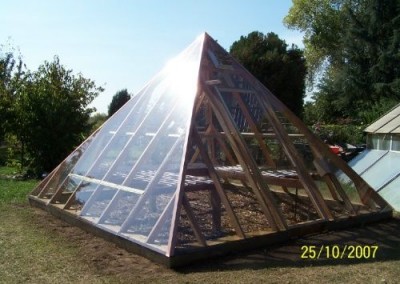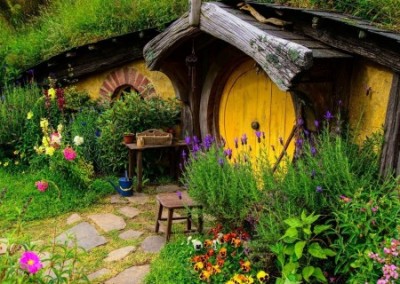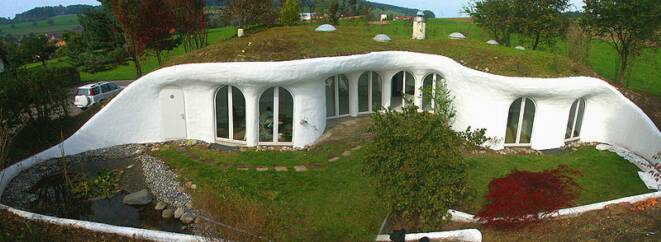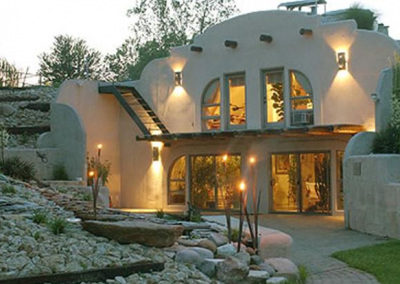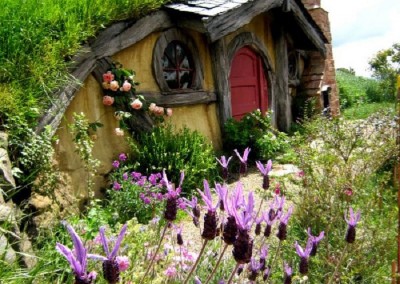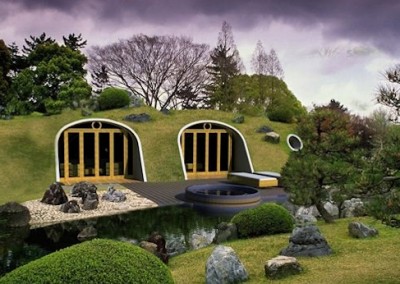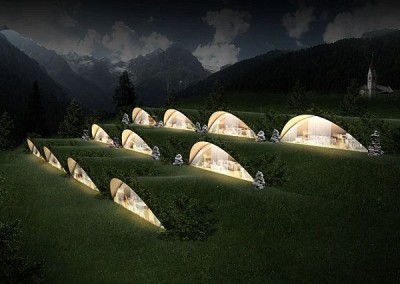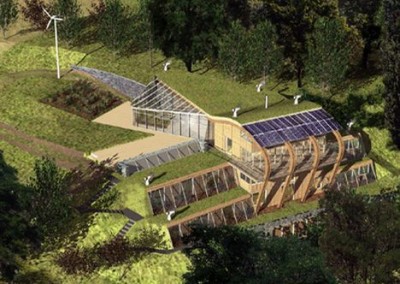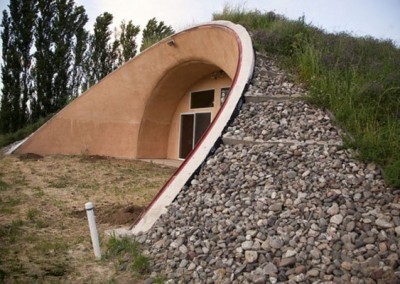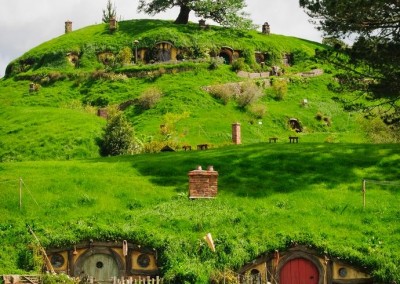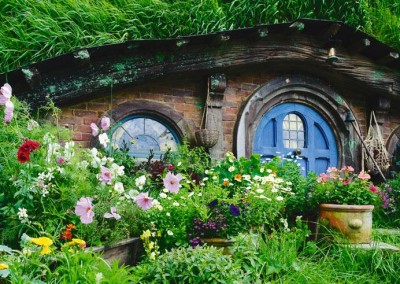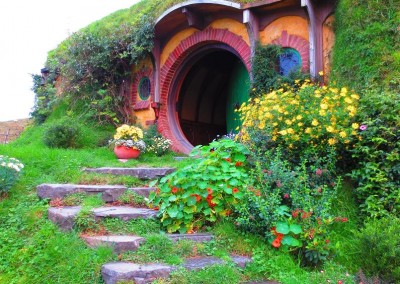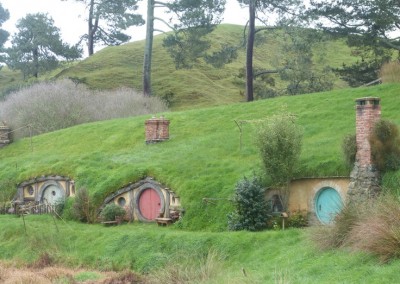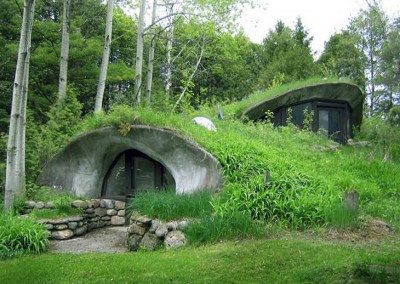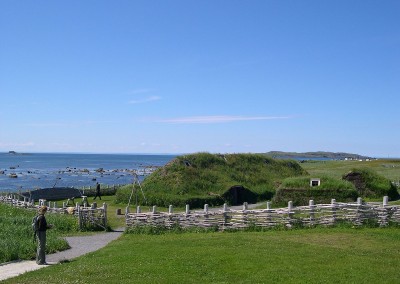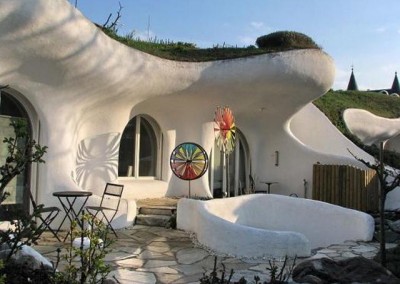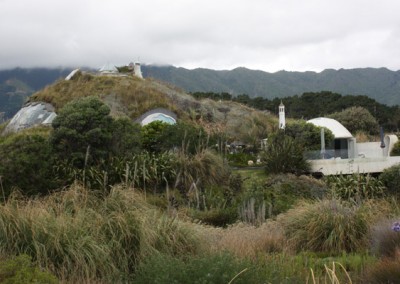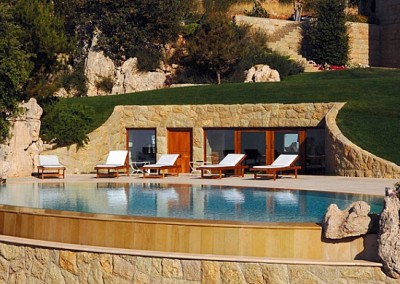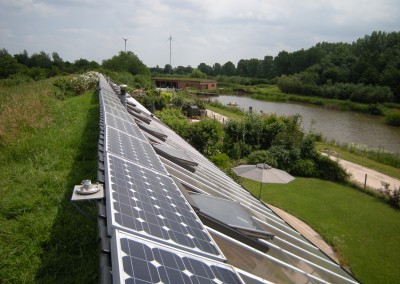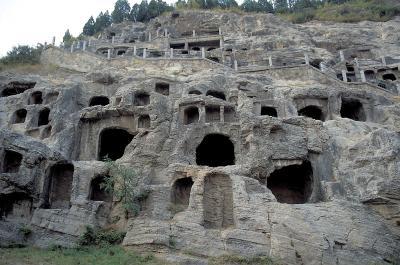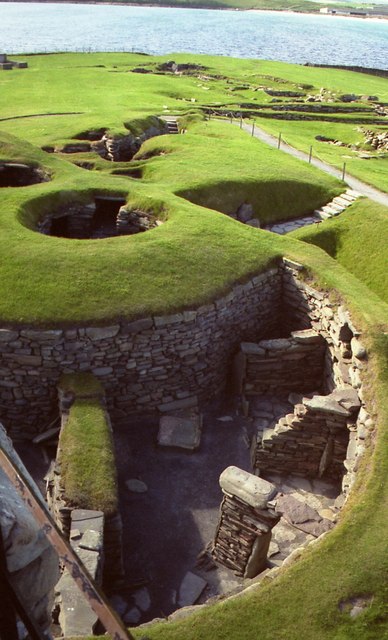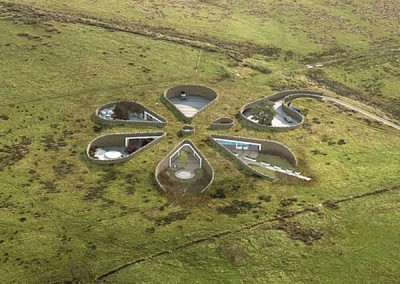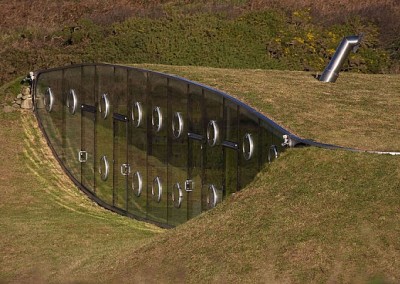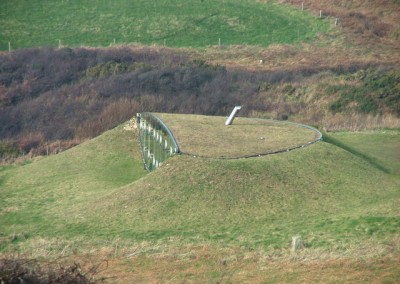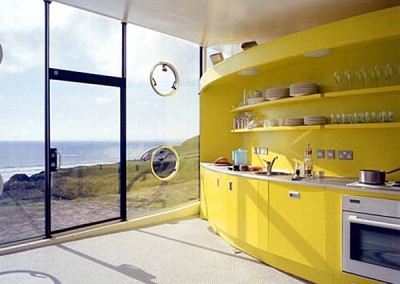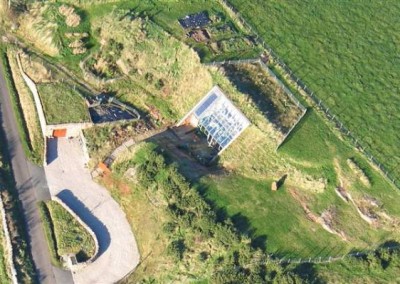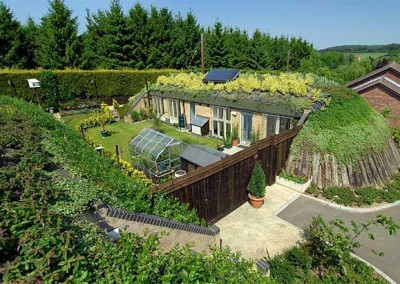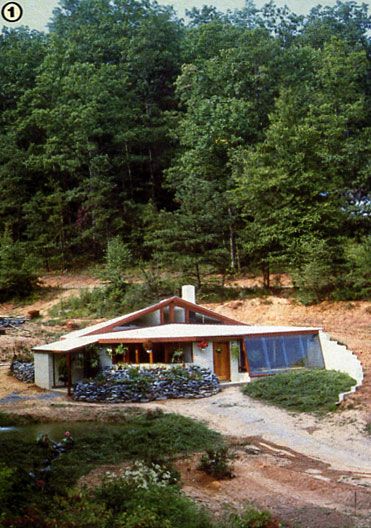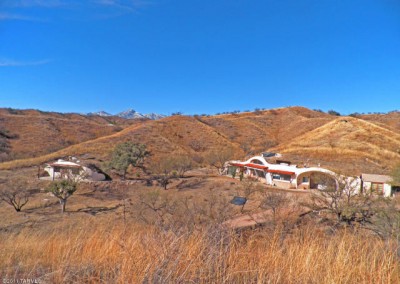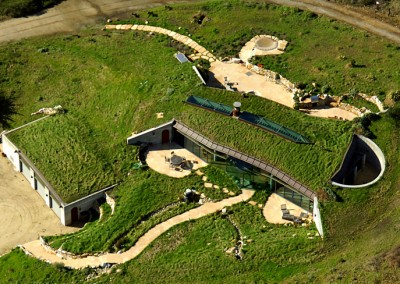Green Building Types
“Homes that have low impact on the environment and that are in harmony with Nature”
Building Structures That Are In Harmony With Nature
Homes That Are Green, Sustainable, and Harmonized With the Ecology. We come from the Earth and are part of it. As long as we are here we need to be in harmony with Mother Earth. Using sacred geometry to layout the communities enhances the connection to Earth, Spirit, and creates a joyous uplifting environment. Physical structures are formed to reflect energetic structures. In the past we wanted to experience our individuality and so we built separate houses and lived separate lives. We want to come together in community while at the same time maintaining the benefits of our individuality and so we need physical structures to reflect and accommodate that. By coming from a solid energetic structure of positive harmonious philosophies, we can build physical structures that are conducive to a harmonious experience that supports both the idea of individuality and community.
“Earth is our only home. Its ability to sustain us depends on us living with it in a more harmonious way.”
Various Types of Sustainable Homes and Buildings
Bamboo
Bamboo is one of the most renewable and sustainable building materials on Earth. The advantages of building with bamboo are numerous. It is a wonderful, natural and renewable resource. It is capable of rapid growth and if used in place of wood it can help to avoid deforestation of precious wood forests.. Click here for a full discussion on Bamboo Homes.
Click for more: Bamboo Benefits, Construction Techniques, Costs and Environmental Impact
Bamboo’s Amazing Growth Rate
Bamboos are some of the fastest-growing plants in the world, due to a unique rhizome-dependent system. Certain species of bamboo can grow 35 inches within a 24-hour period, at a rate of 0.00003 km/h (a growth of approximately 1 millimeter (or 0.02 inches) every 2 minutes). Bamboos are of notable economic and cultural significance in South Asia, Southeast Asia and East Asia, being used for building materials, as a food source, and as a versatile raw product. Bamboo has a higher compressive strength than wood, brick or concrete and a tensile strength that rivals steel.
Benefits, Costs, and Environmental Impact
Bamboo, like true wood, is a natural composite material with a high strength-to-weight ratio useful for structures. In its natural form, bamboo as a construction material is traditionally associated with the cultures of South Asia, East Asia and the South Pacific, to some extent in Central and South America, and by extension in the aesthetic of Tiki culture. In China and India, bamboo was used to hold up simple suspension bridges, either by making cables of split bamboo or twisting whole culms of sufficiently pliable bamboo together. One such bridge in the area of Qian-Xian is referenced in writings dating back to 960 AD and may have stood since as far back as the third century BC, due largely to continuous maintenance.
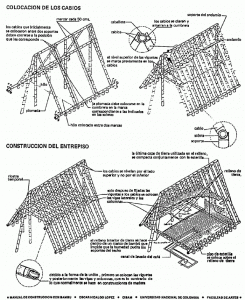 Construction Technique
Construction Technique
Various structural shapes may be made by training the bamboo to assume them as it grows. Squared sections of bamboo are created by compressing the growing stalk within a square form. Arches may similarly be created by forcing the bamboo’s growth into the desired form, costing much less than it would to obtain the same shape with regular wood timber. More traditional forming methods, such as the application of heat and pressure, may also be used to curve or flatten the cut stalks.
Click here for a full discussion on Bamboo Homes.
Click for more: Cob Construction Techniques, Costs and Environmental Impact
Benefits, Costs, and Environmental Impact
Cob
Construction Technique
Click here for a full discussion on Cob Homes.
Domes – Monolithic
Click here for a full discussion on Monolithic Dome Homes
Click for more: Monolithic Dome Benefits, Construction Techniques, Costs and Environmental Impact
Benefits, Costs, and Environmental Impact
Monolithic dome homes are cost efficient and quick to build. They are one of the most Earth friendly and sustainable structures you can build. They are built of concrete and rebar and do not use wood, so they don’t destroy our forests. The main opening can be made of glass and oriented towards the sun for solar heating with almost no other heat source needed. The North side can be buried to keep it a constant 50-60 (f) degrees.
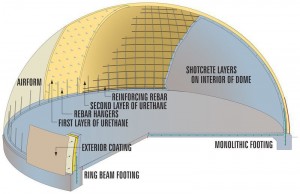 Construction Technique
Construction Technique
Eco friendly Polymer concretes can be used rather than Portland Cement concrete. Portland Cement is a big polluter and contributes 7% of the Total CO2 into released into the atmosphere. Basalt (lava rock) rebar can use used rather than steel rebar for reinforcing. Steel is another big polluter which contributes 7% of the Total CO2 into into the atmosphere.
Click here for a full discussion on Monolithic Dome Structures.
Geodesic Domes
Homes, Greenhouses and Shelters
Click here for a full discussion on Geodesic Dome Homes.
Click for more: Dome Geodesic Benefits, Construction Techniques, Costs and Environmental Impact
Benefits, Costs, and Environmental Impact
A geodesic dome is a spherical or partial-spherical shell structure or lattice shell based on a network of great circles (geodesics) on the surface of a sphere. The geodesics intersect to form triangular elements that have local triangular rigidity and also distribute the stress across the structure. When completed to form a complete sphere, it is a geodesic sphere. A dome is enclosed, unlike open geodesic structures such as playground climbers.
Buckminster Fuller named the dome “geodesic” in 1948. The geodesic dome appealed to Fuller because it was extremely strong for its weight, its “omnitriangulated” surface provided an inherently stable structure, and because a sphere encloses the greatest volume for the least surface area.
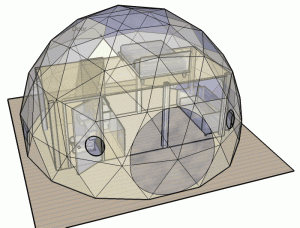 Construction Technique
Construction Technique
Geodesic Domes Homes can be built of many different types of materials. Wooden domes have a hole drilled in the width of a strut. A stainless steel band locks the strut’s hole to a steel pipe. With this method, the struts may be cut to the exact length needed. Triangles of exterior plywood are then nailed to the struts. The dome is wrapped from the bottom to the top with several stapled layers of tar paper, in order to shed water, and finished with shingles. This type of dome is often called a hub-and-strut dome because of the use of steel hubs to tie the struts together.
Click here for a full discussion on Geodesic Dome Homes.
Click for more: Dome Geodesic Benefits, Construction Techniques, Costs and Environmental Impact
Benefits, Costs, and Environmental Impact
Prefabricated dome homes are cost efficient and quick to build. The downside is they are made of styrofoam which is harmful to the environment
Construction Technique
Prefabricated domes are easy to construct because most of the work is done in the factory and all you do is put them together.
Click here for a full discussion on Prefabricated Dome Homes.
Dome Large Buildings
The dome shape structure has several advantages, some of which are: low cost, great strength, and good insulation. The strength is due to the natural strength of the arch, and the insulation is due to the minimal surface area of a spherical section. Click here for a full discussion on Dome Buildings.
Click for more: Dome Buildings Benefits, Construction Techniques, Costs and Environmental Impact
Benefits, Costs, and Environmental Impact
The dome shape structure has several advantages, some on which are: low cost, great strength, and good insulation. The strength is due to the natural strength of the arch, and the insulation is due to the minimal surface area of a spherical section.
The dome, when finished, is earthquake, tornado and hurricane resistant (the US Federal Emergency Management Agency rates them as “near-absolute protection” from F5 tornadoes and Category 5 Hurricanes). A number of monolithic domes constructed using MDI techniques have survived major disasters.
 Construction Technique
Construction Technique
Modern construction differs significantly from the original concrete-over-dirt method. The current methods were developed by three brothers from Idaho: Barry, Randy, and David South. The first dome built using these method was constructed in Shelley, Idaho:
- A reinforced concrete foundation, or “ring beam”, is constructed, defining the shape of the base of the structure.
- The fabric form, or air form, is attached to the foundation and inflated with an air blower. The air form contains an airlock to allow workers to enter the form while it is inflated.
- A layer of polyurethane foam is sprayed on the interior of the form. (Its purposes are to give rigidity to the air form, secure the rebar in place, provide support for spraying in the concrete mixture, and insulate the final structure.)
Rebar is attached to the outside layer of foam, using clips that are attached to the foam. - Several inches of concrete are sprayed over the rebar frame.
- After the concrete has set, the blower is turned off.
- The exposed surface of the air form may be left as is, or a surface treatment such as paint, tile, etc., may be applied. (Proper selection of air form material will ensure prevention from long-term degradation due to ultraviolet radiation.)
In instances where necessity requires economical construction for multiple small and basic dwellings, the dome can be built without insulation and the air form can be removed after completion and re-used to build additional domes.
Click here for a full discussion on Dome Buildings Homes.
Dome Home in Thailand
Click here to go to Steve’s Website and see a full discussion on Thailand Dome Home.
Click for more: Steve's Dome Home Story, Construction Techniques and Costs
Story of Steve’s Dome Home
In 2011 I had a wonderful visit with my friend Hajjar Gibran. For years he has inspired me with his creative ideas. This time he was building domes at his retreat center in northeast Thailand. He and his wife offered me a spot on their mango farm to build my own dome.
With Hajjar’s guidance and design ideas, along with my own, and his son-in-law Tao’s masonry skills, I had my dome home up and painted in six weeks.
The cost for the basic structure was under $6000. It took a few more weeks to add the details, such as doors, screens, pond, upstairs structure, stonework and landscaping. All this, including furnishings, was under $3000. ..Bringing my total cost to about $9,000. Please keep in mind this is in cost-friendly Thailand.
As much as I love my dome home, I probably would not have built it if was a long process. The low cost and time-efficiency of using blocks is what enticed me into building. Because suitable compressed earth blocks were not available at the time, cement blocks and clay bricks were used.
Now the goal is to take this design ..which is quick, affordable, strong, beautiful and fun, ..and build with more sustainable materials that better insulate for colder climates.
At the moment I have no plans or blueprints to share, however, Hajjar and I are working on an improved building method and hope to provide helpful information soon.
Click here to go to Steve’ website and the full story about his Dome Home.
Earthbag
Living in Earthbag homes is living in harmony with the Earth. The benefits of earthbag construction are many. Here are just a few: connects you with Earth energy; easy to learn and build with; sustainable; ecological, using mostly earth; inexpensive; versatile in building styles possible; durable; earthquake, can be either insulation or thermal mass; non-toxic;flood and bullet resistant; uses a simple foundation. Domes uses very little wood, steel, or concrete to build, which eliminates the need to use these materials that have an adverse affect on the environment. Click here for a full discussion on Earthbag Homes.
Click for more: Earthbag Benefits, Construction Techniques, Costs and Environmental Impact
Benefits, Costs, and Environmental Impact
Earthbag construction is an inexpensive method to create structures which are both strong and can be quickly built. It is a natural building technique that evolved from historic military bunker construction techniques and temporary flood-control dike building methods. The technique requires very basic construction materials: sturdy sacks, filled with inorganic material usually available on site. Standard earthbag fill material has internal stability. Either moist subsoil that contains enough clay to become cohesive when tamped, or an angular gravel or crushed volcanic rock is used. (Sandbag structures with sand fills are an alternative technology and require very different construction details). Walls are gradually built up by laying the bags in courses — forming a staggered pattern similar to bricklaying.
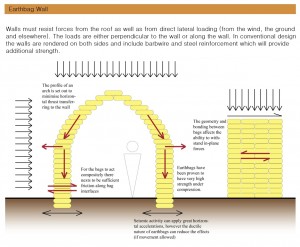 Construction Technique
Construction Technique
Earth is the most typical fill material used in bag-wall construction techniques. This building method utilizes stacked polypropylene or natural-fiber (burlap) bags filled with earth or other mixes without a stabilizer such as portland cement, to form footings, foundations, walls and even vaulted or domed roofs. In recent years, building with earth bags has become one of the increasingly practiced techniques in natural building. It facilitates self-contained, often free-form rammed-earth structures. Its growing popularity relates to its use of an abundant and readily available often site-available material (earth) in a potentially inexpensive building technique that is flexible, and easy to learn and use. However, because earth is a poor insulator, in more extreme climates other filler variations are now being explored, substituting pumice, rice-hulls or another material with better insulating value for all or part of the earth.
Click here for a full discussion on Earthbag Homes.
Earthships
Click here to go to a full discussion on Earthship Homes. Michael Reynolds is the creator of Earthships and founder of Earthship Biotecture. Click here to go to Earthships official website.
Click for more: Earthship Benefits, Construction Techniques, Costs and Environmental Impact
Benefits, Costs, and Environmental Impact
An Earthship is a type of passive solar house that is made of both natural and recycled materials (such as earth-filled tires), designed and marketed by Earthship Biotecture of Taos, New Mexico. The term is a registered trademark of Michael Reynolds, founder of Earthship Biotecture. Click here to go to Earthships official website.
Earthships are intended to be “off-the-grid ready” homes, with minimal reliance on both public utilities and fossil fuels. Earthships are constructed to use available natural resources, especially energy from the sun. Earthships are designed to use thermal mass construction and natural cross ventilation, assisted by thermal draught (Stack effect), to regulate indoor temperature.
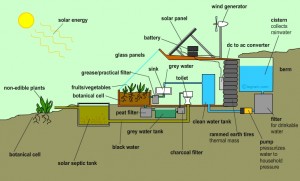 Construction Technique
Construction Technique
The buildings are often horseshoe-shaped to maximize natural light and solar-gain during winter months, with windows on sun-facing walls admitting light and heat. The thick and dense walls provide thermal mass that naturally regulates the interior temperature during both cold and hot outside temperatures. The outer walls in the majority of Earthships are made of earth-rammed tires, but any dense material with a potential to store heat, such as concrete, adobe, earth bags, or stone, could theoretically be used to create a building similar to an Earthship. The tire walls are strengthened by using concrete in the tires on the ends, called “concrete half blocks”.
On top of the tire walls are either “can and concrete bond beams” made of recycled cans joined by concrete, or wooden bond beams with wooden shoes. These are attached to the tire walls using concrete anchors, poured blocks of concrete located inside the top tires. Wooden shimming blocks placed on top of the wooden bond beam make up the wooden shoes. The wooden bond beam two layers of lumber bolted on to the concrete anchors. Re-bar is used to “nail” the wooden shoes to the wooden bond beam.
Internal, non-load-bearing walls are often made of a honeycomb of recycled cans joined by concrete and are referred to as tin can walls. These walls are usually thickly plastered with adobe.
The roof is made using trusses, or wooden support beams called vigas, that rest on the wooden shoes or the tin can walls placed on the bond beams. The roof as well as the north, east and west facing walls are heavily insulated to prevent heat loss.
Click here for a full discussion on Earthships.
Exotic
Click here to go to a full discussion on Exotic Homes.
Click for more: Exotic Construction Techniques, Costs and Environmental Impact
Benefits, Costs, and Environmental Impact
Exotic Homes run the range from being eco friendly to very unsustainable.
Construction Technique
Exotic Homes construction varies widely.
Click here for a full discussion on Exotic Homes.
Click for more: Ferrocement Construction Techniques, Costs and Environmental Impact
Benefits, Costs, and Environmental Impact
Ferrocement or ferro-cement (thin-shell concrete, ferro-concrete) is a system of reinforced mortar[1] or plaster (lime or cement, sand and water) applied over layers of metal such as chicken wire or woven or expanded metal mesh or fibers and possibly closely spaced small-diameter steel rods such as rebar. It is used to form relatively thin, hard, strong forms in many shapes ideal for such applications as hulls for boats, shell roofs, and water tanks. Ferrocement originated in the 1840’s in France and is the origin of reinforced concrete. It has a wide range of other uses including sculpture and prefabricated building components. The term “ferrocement” has been applied by extension to other composite materials, including some containing no cement and no ferrous material.
The economic advantage of ferro concrete structures is that they are stronger and more durable than some traditional building methods.[citation needed] Depending on the quality of construction and the climate of its location, houses may pay for themselves with almost zero maintenance and lower insurance requirements. Water tanks could pay for themselves by not needing periodic replacement, if properly constructed of reinforced concrete.[citation needed]
Ferro concrete structures can be built quickly, which can have economic advantages. In inclement weather conditions, the ability to quickly erect and enclose the building allows workers to shelter within and continue interior finishing.
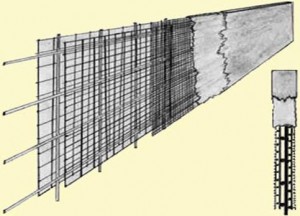 Construction Technique
Construction Technique
The desired shape may be built from a multi-layered construction of mesh, supported by an armature, or grid, built with rebar and tied with wire. For optimum performance, steel should be rust-treated, (galvanized) or stainless steel. (In early practice, in the desert, or for exterior scenery construction, “sound building practice” was not considered, or perhaps unknown as it grew in some cases, from a folk craft tradition of masons collaborating with blacksmiths.) Over this finished framework, an appropriate mixture (grout or mortar) of Portland cement, sand and water and/or admixtures is applied to penetrate the mesh. During hardening, the assembly may be kept moist, to ensure that the concrete is able to set and harden slowly and to avoid developing cracks that can weaken the system. Steps should be taken to avoid trapped air in the internal structure during the wet stage of construction as this can also create cracks that will form as it dries. Trapped air will leave voids that allow water to collect and degrade (rust) the steel. Modern practice often includes spraying the mixture at pressure (a technique called shotcrete) or some other method of driving out trapped air.
Older structures that have failed offer clues to better practices. In addition to eliminating air where it contacts steel, modern concrete additives may include acrylic liquid “admixtures” to slow moisture absortion and increase shock resistance to the hardened product or to alter curing rates. These technologies, borrowed from the commercial tile installation trade, have greatly aided in the restoration of these structures.[7] Chopped glass or poly fiber can be added to reduce crack development in the outer skin. (Chopped fiber could inhibit good penetration of the grout to steel mesh constructions. This should be taken into consideration and mitigated, or limited to use on outer subsequent layers. Chopped fibers may also alter or limit some wet sculpting techniques.)
Click here for a full discussion on Ferrocement Homes.
Click for more: Pyramid Construction Techniques, Costs and Environmental Impact
Benefits, Costs, and Environmental Impact
Pyramid range from being eco friendly to very unsustainable. The benefit is more about the shape producing high viration energy. The pyramid structure creates energy naturally. This energy, having a beneficial effect on all living things, also has preservative effect. Experiment have shown that if you spend time in a pyramid you will live a longer life. Taking advantage of the infinite benefits of pyramid power is smart living.
Construction Technique
Pyramid homes can be built from a wide variety of materials and techniques are numerous.
Click here for a full discussion on Pyramid Homes.
Underground
Click here to go to a full discussion on Underground Homes.
Click for more: Underground Construction Techniques, Costs and Environmental Impact
Benefits, Costs, and Environmental Impact
Earth sheltering is the architectural practice of using earth against building walls for external thermal mass, to reduce heat loss, and to easily maintain a steady indoor air temperature. Earth sheltering has become relatively more popular in modern times, especially among environmentalists and advocates of passive solar and sustainable architecture. However, the practice has been around for nearly as long as humans have been constructing their own shelters.
The benefits of earth sheltering are numerous. They include: taking advantage of the earth as a thermal mass, offering extra protection from the natural elements, energy savings, providing substantial privacy, efficient use of land in urban settings, shelters have low maintenance requirements, and earth sheltering commonly takes advantage of passive solar building design.
The Earth’s mass absorbs and retains heat. Over time, this heat is released to surrounding areas, such as an earth shelter. Because of the high density of the earth, change in the earth’s temperature occurs slowly. This is known as ‘thermal lag.’ Because of this principle, the earth provides a fairly constant temperature for the underground shelters, even when the outdoor temperature undergoes great fluctuation. In most of the United States, the average temperature of the earth once below the frost line is between 55 and 57 degrees Fahrenheit (13 to 14 degrees Celsius). Frost line depths vary from region to region. In the USA frost lines can range from just under the surface to more than 40 inches. Thus, at the base of a deep earth berm, the house is heated against an exterior temperature gradient of perhaps ten to fifteen degrees, instead of against a steeper temperature grade where air is on the outside of the wall instead of earth. During the summer, the temperature gradient helps to cool the house.
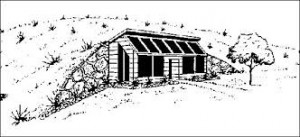 Construction Technique
Construction Technique
- Earth berming: Earth is piled up against exterior walls and packed, sloping down away from the house. The roof may or may not be fully earth covered, and windows/openings may occur on one or more sides of the shelter. Due to the building being above ground, fewer moisture problems are associated with earth berming in comparison to underground/fully recessed construction.
- In-hill construction: The house is set into a slope or hillside. The most practical application is using a hill facing towards the equator (south in the Northern Hemisphere and north in the Southern Hemisphere). There is only one exposed wall in this type of earth sheltering, the wall facing out of the hill, all other walls are embedded within the earth/hill.
- Underground/fully recessed construction: The ground is excavated, and the house is set in below grade. It can also be referred to as an Atrium style due to the common atrium/courtyard constructed in the middle of the shelter to provide adequate light and ventilation.
Click here for a full discussion on Underground Homes.

